24/7 Helpline:
(866) 899-221924/7 Helpline:
(866) 899-2219
Learn more about Eating Disorder Treatment centers in San Dimas
Eating Disorder Treatment in Other Cities

Other Insurance Options

Optima

Access to Recovery (ATR) Voucher

Holman Group

Magellan

Cigna

American Behavioral

Kaiser Permanente

Premera

Private insurance

BlueCross

State Farm

Ceridian

Health Choice

Molina Healthcare

Excellus

Highmark
Beacon

Optum

Horizon Healthcare Service

BHS | Behavioral Health Systems






BAART Programs
BAART Programs, in Lynwood, California, provide outpatient addiction treatment for adults in opioid ...

Hollywood Hills Recovery
Hollywood Hills Recovery is a private rehab located in Los Angeles, California. Hollywood Hills Reco...

Enki Youth and Family Services
Enki Youth and Family Services is a private rehab located in La Puente, California. Enki Youth and F...

Passages
Passages Malibu is a luxury, 12 step-alternative drug and alcohol rehab for adults in Malibu, Califo...

The Holistic Sanctuary
Most Exclusive Healing Center In The World. The Holistic Sanctuary is a Luxury Healing Center based ...

Tarzana Treatment Centers – 44447 10th Street West
Tarzana Treatment Center – 10th Street West is a comprehensive drug and alcohol rehab for adults in ...

Seasons In Malibu
Seasons In Malibu is a World Class, Luxury, dual-licensed treatment center in beautiful Malibu, CA. ...

Walter Hoving Home
Walter Hoving Home is a non-profit rehab located in Pasadena, CA. The Hoving Home is a residential s...

Kaiser Permanente – Addictions
Kaiser Permanente – Addictions is a private rehab located in Los Angeles, California. Kaiser Permane...

HOPICS – South Broadway
HOPICS — which stands for Homeless Outreach Program Integrated Care System — is a community organiza...

Tarzana Treatment Center – West Lancaster Boulevard
Tarzana Treatment Center - West Lancaster Boulevard is a full-service behavioral healthcare organiza...

Eternal Purpose Recovery Center
Eternal Purpose Recovery Center is a luxury alcohol and drug rehab located in North Hollywood, Calif...

Tarzana Treatment Centers – Magnolia Avenue
Tarzana Treatment Centers - Magnolia Avenue is a full-service behavioral healthcare organization tha...

Malibu Detox
Malibu Detox is a luxury co-occurring mental health and substance use disorder rehab in Topanga, CA....

Tarzana Treatment Center
Tarzana Treatment Center - West Avenue is a full-service behavioral healthcare organization that pro...

Balance Treatment Center
Balance Treatment Center - Las Virgenes Road offers intensive outpatient and inpatient services for ...

Luxe Recovery
Located in Los Angeles, California, Luxe Recovery is a drug and alcohol rehab that supports adults s...

Tarzana Treatment Center
Tarzana Treatment Center - Reseda Boulevard is a full-service behavioral healthcare organization tha...

Sober College
Sober College provides substance abuse and mental health treatment for young adult men and women age...

Monte Nido – Eating Disorder Center of California
Monte Nido – Eating Disorder Center of California is a private rehab located in Los Angeles, Califor...

Serenity Malibu
Serenity Malibu is a dual-diagnosis luxury addiction treatment center that provides one-on-one treat...

Tarzana Treatment Centers – 18646 Oxnard Steet
Tarzana Treatment Centers – Oxnard Street is a comprehensive drug and alcohol rehab for adolescents ...

The Lighthouse – Sober Living
The Lighthouse – Sober Living is a private rehab located in Lomita, California. The Lighthouse – Sob...

San Fernando Valley Community Mental Health Center – Elderly
San Fernando Valley Community Mental Health Center – Elderly is a private rehab located in Van Nuys,...

Alcohol and Drug Abuse – Latino Recovery Home
Alcohol and Drug Abuse - Latino Recovery Home offers inpatient treatment for individuals with alcoho...

Growth Extended
Growth Extended offers intensive outpatient and residential treatment for adolescents who struggle w...

Pasadena Public Health Department – Social & Mental Health Division
Pasadena Public Health Department - Social & Mental Health Division is a public rehab located in Pas...

New Vistas Sober Living
New Vistas Sober Living is a private rehab located in Los Angeles, California. New Vistas Sober Livi...

Clearview Treatment Programs – Grandview Avenue
Clearview Treatment Programs – Grandview Avenue is a private rehab located in Los Angeles, Californi...

Bimini Recovery Center – Mary Lind Recovery Centers
Bimini Recovery Center – Mary Lind Recovery Centers is a private rehab located in Los Angeles, Calif...

Fred Brown Recovery Services – 276 West 14th Street
Fred Brown Recovery Services – 276 West 14th Street is a private rehab located in Los Angeles, Calif...

BHS – Patterns
BHS - Patterns is a behavioral health treatment provider serving adolescents, adults, and elderly pa...

Henry Mayo Newhall Memorial Hospital – Behavioral Health
Henry Mayo Newhall Memorial Hospital – Behavioral Health is a private rehab located in Santa Clarita...

Casa Treatment Center
Founded in 1967, Casa Treatment Center is the first recovery home in Pasadena to specifically cater ...

Authentic Recovery Center – Residential
Authentic Recovery Center - ARC provides inpatient and outpatient services for individuals with alco...

Narcotics Prevention Project – Methadone Treatment
Narcotics Prevention Project – Methadone Treatment is a private rehab located in Los Angeles, Califo...

Airport Marina Counseling Services
Airport Marina Counseling Services is a private rehab located in Los Angeles, California. Airport Ma...

Homeless Healthcare of Los Angeles
Homeless Healthcare of Los Angeles is a private rehab located in Los Angeles, California. Homeless H...

Youth and Family Services – Boyle Heights
Youth and Family Services – Boyle Heights is a private rehab located in Los Angeles, California. You...

First to Serve Outreach Ministries
First to Serve Outreach Ministries is a private rehab located in Los Angeles, California. First to S...

Valley Recovery Center
Valley Recovery Center offers those men facing addiction a safe and encouraging environment along wi...

Pacific Clinics – Sierra Family Center
Pacific Clinics - Sierra Family Center is a private rehab located in Glendora, CA. Pacific Clinics -...

Prototypes – Women’s Center
Prototypes - Women's Center offers inpatient and outpatient treatments for women with alcohol and/or...

The High Road Program
The High Road Program provides education and substance abuse counseling for individuals referred thr...

BHS – American Recovery Center
Behavioral Health Services (BHS) - American Recovery Center, located in Pomona, California, is a non...

The Arroyos Treatment Centers
The Arroyos Treatment Centers provides multidisciplinary treatment for mental health and chemical de...

Journey Malibu
Journey Malibu is a luxury substance abuse and co-occurring treatment located in beautiful Malibu, C...

Greenfield Lodge – Men’s Sober Living
Greenfield Lodge – Men’s Sober Living is a private rehab located in Pacific Palisades, California. G...

Thelma McMillen Center
Thelma McMillen Center is an outpatient treatment center that serves adults and teens who are strugg...

La Casa Mental Health
La Casa Mental Health is a dual diagnosis mental health and substance use disorder treatment center ...

Pasadena Recovery Center
Pasadena Recovery Center offers outpatient and inpatient treatment for individuals with alcohol and/...

California Health Alcohol
California Health Alcohol is a private rehab located in Los Angeles, California. California Health A...

Family Services – Alcohol and Drug Counseling – Santa Monica
Family Services – Alcohol and Drug Counseling – Santa Monica is a private rehab located in Santa Mon...

Enki Youth and Family Services
Enki Youth and Family Services is a private rehab located in El Monte, California. Enki Youth and Fa...

Enki East Los Angeles Mental Health Services
Enki East Los Angeles Mental Health Services is a private rehab located in Bell Gardens, California....

Clinica Monsenor Oscar A Romero
Clinica Monsenor Oscar A Romero is a private rehab located in Los Angeles, California. Clinica Monse...

Hollywood Mental Health Center
Hollywood Mental Health Center is a public rehab located in Los Angeles, California. Hollywood Menta...

The High Road Program
The High Road Program, in Lancaster, California, provides outpatient addiction counseling and educat...

Sunrise Community Counseling Center
Sunrise Community Counseling Center is a private rehab located in Los Angeles, California. Sunrise C...

His Sheltering Arms Outpatient
His Sheltering Arms Outpatient is a private rehab located in Los Angeles, CA. His Sheltering Arms Ou...

Didi Hirsch Mental Health Center – West Manchester Avenue
Didi Hirsch Mental Health Center – West Manchester Avenue is a private rehab located in Los Angeles,...

Children’s Bureau – Oakwood Family Center
Children’s Bureau – Oakwood Family Center is a private rehab located in Los Angeles, California. Chi...

Hazelden Betty Ford Foundation
Hazelden Betty Ford Foundation - Santa Monica Boulevard offers an outpatient treatment program that ...

BHS – Boyle Heights Family Recovery Center
Boyle Heights Family Recovery Center (BHS) is a 12 step focused outpatient drug and alcohol rehab in...

Paloma Recovery Home
Paloma Recovery Home is a private rehab located in Los Angeles, CA. Paloma Recovery Home specializes...

Pasadena Council on Alcohol and Drug Dependency
Pasadena Council on Alcohol and Drug Dependency offers outpatient treatment for individuals with alc...

Interagency Drug Abuse Recovery Program – IADARP
Interagency Drug Abuse Recovery Program – IADARP is a non-profit rehab located in North Hollywood, C...

Insight Treatment Program for Teens and Families – Van Nuys
Insight Treatment Program for Teens and Families is a rehab facility located throughout Greater LA a...

Design for Change
Design for Change is dedicated to provide alcohol and drug addiction services to individuals seeking...

AADAP – Asian American Drug Abuse Program
Asian American Drug Abuse Program (AADAP) provides outpatient substance abuse treatment programs lik...

Shields for Families – Eden Dual Diagnosis
Shields for Families–Eden Dual Diagnosis, in Lynwood, California, is an outpatient drug and alcohol ...

AEGIS Treatment Centers – Inglewood
AEGIS Medical Systems is an outpatient rehab located in Inglewood, CA. AEGIS Medical Systems special...

AEGIS Treatment Centers – Pasadena
AEGIS Medical Systems is an outpatient rehab located in Pasadena, CA. AEGIS Medical Systems speciali...

Fred Brown Recovery Services – West 19th Street
Fred Brown Recovery Services – West 19th Street is a non-profit rehab located in San Pedro, Californ...

AEGIS Treatment Centers
Aegis Treatment Centers - Pomona is an outpatient rehab located in Pomona, CA. Aegis Treatment Cente...

Still Waters Recovery Homes
Still Waters Recovery Homes is a private rehab located in Lancaster, California. Still Waters Recove...

BHS – NCADD South Bay
Behavioral Health Services - NCADD South Bay is a behavioral healthcare and addiction treatment prov...

Antelope Valley Hospital – Mental Health Services
Antelope Valley Hospital - Mental Health Services is a non-profit rehab located in Lancaster, CA. An...

Lewis Professional Services
Lewis Professional Services offers outpatient services for individuals with alcohol and/or substance...

The Last House Sober Living
The Last House Sober Living offers inpatient and outpatient treatment for individuals with alcohol a...

Social Model Recovery Systems – Royal Palms
Located in Los Angeles, California, Social Model Recovery Systems – Royal Palms is a drug and alcoho...

Pacific Asian Alcohol and Drug Program
Special Services for Groups - Pacific Asian Alcohol and Drug Program is a non profit rehab located i...

Los Angeles County Mental Health
Los Angeles County Mental Health is a public rehab located in Sylmar, California. Los Angeles County...

Cri Help – The George T. Pfleger Center
Cri Help - The George T. Pfleger Center offers gender-specific residential treatment for those indiv...

Pacific Asian Counseling Services
Pacific Asian Counseling Services is a private rehab located in Los Angeles, California. Pacific Asi...

Fred Brown Recovery Services
Fred Brown Recovery Services is a non-profit rehab located in Los Angeles, California. Fred Brown Re...

Positive Steps
Positive Steps offers inpatient treatment for individuals with a Mental Health diagnosis and/or Subs...

Recovery Now
Recovery Now is a private rehab located in Los Angeles, California. Recovery Now specializes in the ...

Fred Brown Recovery Services – Women’s House
Fred Brown Recovery Services – Women’s House is a drug and alcohol rehab that supports women aged 18...

Stepping Stones Home
Stepping Stones Home is a private rehab located in Covina, California. Stepping Stones Home speciali...

Gateways Hospital and Mental Health Center
Gateways Hospital and Mental Health Center is a private rehab located in Los Angeles, California. Ga...

Phoenix House – Services for Teens in Los Angeles
Phoenix House - Eldridge Avenue offers inpatient and outpatient treatment for individuals with alcoh...

Clearview Treatment Programs
For over 20 years, Clearview has been a trusted mental health residential treatment center in Los An...

Center for Individual and Family Counseling – Valley Village
Center for Individual and Family Counseling – Valley Village is a private rehab located in Los Angel...

Salvation Army – Wellness Center
Salvation Army–Wellness Center provides faith-based, 12 step-focused addiction treatment for adults ...

Nova Vitae Treatment Center
Nova Vitae Treatment Center is a private rehab located in Woodland Hills, California. Nova Vitae Tre...

Amity Foundation – Amistad de Los Angeles
Amity Foundation – Amistad de Los Angeles is a private rehab located in Los Angeles, California. Ami...

Guidance Center – Long Beach
Guidance Center – Long Beach is a private rehab located in Long Beach, California. Guidance Center –...

Social Model Recovery Systems – River Community
Social Model Recovery Systems - River Community offers outpatient and intensive outpatient treatment...

Pacific Clinics – Mental Health Services
Pacific Clinics – Mental Health Services is a private rehab located in West Covina, California. Paci...

East Los Angeles Health Task Force – Substance Abuse
East Los Angeles Health Task Force – Substance Abuse is a private rehab located in Los Angeles, Cali...

BHS – Redgate Memorial Recovery Center
BHS - Redgate Memorial Recovery Center offers inpatient and outpatient services for individuals with...

La Fuente Hollywood Treatment Center
La Fuente Hollywood Treatment Center offers inpatient and outpatient treatment specifically designed...

AADAP – Asian American Drug Abuse Program – Youth Outpatient Treatment
Asian American Drug Abuse Program (AADAP) - Youth Outpatient Treatment provides outpatient substance...

Child and Family Guidance Center – Balboa Boulevard
Child and Family Guidance Center – Balboa Boulevard is a private rehab located in Los Angeles, Calif...

Covenant House California
Covenant House California is an inpatient rehab located in Los Angeles, CA. Covenant House Californi...

The Advanced Drug Rehab Center
The Advanced Drug Rehab Center offers outpatient treatment for individuals with alcohol and/or subst...

Center for Integrated Family Health – Sober Solutions
Center for Integrated Family Health – Sober Solutions is a private rehab located in Covina, Californ...

Diversion Intervention Foundation
Diversion Intervention Foundation is a private rehab located in Montebello, California. Diversion In...

USC Medical Center – Behavioral Health
USC Medical Center – Behavioral Health is a public rehab located in Los Angeles, California. USC Med...

Coastal Asian Pacific Islander Family – Mental Health
Coastal Asian Pacific Islander Family – Mental Health is a public rehab located in Gardena, Californ...

Fred Brown Recovery Services – 278 West 14th Street
Fred Brown Recovery Services – 278 West 14th Street is a non-profit rehab located in Los Angeles, Ca...

Second Chance for Teens and Adults
Second Chance for Teens and Adults is a private rehab located in Glendora, California. Second Chance...

Insight Choices
Insight Choices, in West Hollywood, California, provides outpatient mental and behavioral health car...

Casitas Esperanza – Bridges
Casitas Esperanza – Bridges is a private rehab located in El Monte, California. Casitas Esperanza – ...

Mini Twelve Step House
Mini Twelve Step House offers residential treatment for women and women with small children struggli...

Bridge at Valley Glen
Bridge at Valley Glen is a private rehab for men located in Van Nuys, CA. Bridge at Valley Glen offe...

Los Angeles LGBT Mental Health
Los Angeles LGBT Mental Health is a private rehab located in Los Angeles, California. Los Angeles LG...

Mental Health Services – Excelsior House
Mental Health Services – Excelsior House is a private rehab located in Inglewood, California. Mental...

Alcohol and Substance Abuse Programs
Alcohol and Substance Abuse Programs is a alcohol and drug addiction treatment that also addresses c...

Guidance Center
Guidance Center is a private rehab located in San Pedro, California. Guidance Center specializes in ...

BAART Programs – Southeast
BAART Programs - Southeast is an outpatient clinic who provides methadone treatment and substance us...

AADAP – Asian American Drug Abuse Program – Therapeutic Community
Asian American Drug Abuse Program (AADAP) - Therapeutic Community offers adult inpatient treatment a...

Ettie Lee Youth and Family Services
Ettie Lee Youth and Family Services is a private rehab located in Pomona, CA. Ettie Lee Youth and Fa...

Watts Health – House of Uhuru
Watts Health – House of Uhuru is a private rehab located in Los Angeles, California. Watts Health – ...

Tarzana Treatment Centers – 18700 Oxnard Street
Tarzana Treatment Centers - 18700 Oxnard Street is a full-service behavioral healthcare organization...

Pax House
Pax House offers outpatient and sober living services for individuals with alcohol and/or substance ...

Child and Family Center
Child and Family Center is a private rehab located in Santa Clarita, California. Child and Family Ce...

Prototypes
Prototypes was founded in 1986 by Vivian Brown and Maryann Fraser, who aimed to create a rehab that ...

Children’s Bureau – Magnolia Place Family Center
Children’s Bureau – Magnolia Place Family Center is a private rehab located in Los Angeles, Californ...

AEGIS Medical Systems – El Monte
AEGIS Medical Systems - El Monte is an outpatient rehab located in El Monte, CA. AEGIS Medical Syste...

LACADA – Los Angeles Center for Alcohol and Drug Abuse
Los Angeles Center for Alcohol and Drug Abuse (LA CADA) is an alcohol and drug rehabilitation center...

Cri Help – Outpatient
Cri Help - Outpatient offers treatment for individuals with alcohol and/or substance addiction. The ...

Valley Recovery Center
Valley Recovery Center is a private rehab located in Inglewood, California. Valley Recovery Center s...

Casa de las Amigas – Drug and Alcohol Rehab for Women
Casa de las Amigas – Drug and Alcohol Rehab for Women is an addiction treatment center located in Pa...

Dallas Taylor Interventions
Dallas Taylor Interventions is a private rehab located in Los Angeles, California. Dallas Taylor Int...

BHS – South Bay Recovery Center
BHS - South Bay Recovery Center provides Outpatient Substance Abuse Treatment for those clientes who...

New Found Life
New Found Life offers inpatient treatment for individuals with alcohol and/or substance addiction. T...

Felicity House Women’s
Felicity House Women’s is a non-profit rehab located in Los Angeles, California. Felicity House Wome...

Valley Community Healthcare
Valley Community Healthcare is a private rehab located in Los Angeles, California. Valley Community ...

Gateways Hospital and Mental Health Center – Adult Residential
Gateways Hospital and Mental Health Center – Adult Residential is a private rehab located in Los Ang...

Spiritt Family Services
Spiritt Family Services is a private rehab located in South El Monte, California. Spiritt Family Ser...

Nerine Shatner Friendly House
Nerine Shatner Friendly House is a sober living facility that offers treatment services for women wh...

Beit T’Shuvah
Beit T’Shuvah, located in Los Angeles, California, offers addiction treatment services for individua...

Living Proof Recovery Center
Living Proof Recovery Center is a private rehab located in Monrovia, California. Living Proof Recove...

Chabad Residential Treatment Center
Chabad Residential Treatment Center offers a residential treatment program for those men ages 18 and...

Turning Point – Alcohol and Drug Education Program
Turning Point – Alcohol and Drug Education Program is a private rehab located in Los Angeles, Califo...

Latinas Alcohol Recovery Home
Latinas Alcohol Recovery Home offers residential treatment for women struggling with alcohol and oth...

Phoenix House – Venice Beach Residential and Outpatient Services
Phoenix House - Ocean Front Walk offers inpatient and outpatient treatment for individuals with alco...

Rio Hondo Mental Health Center
Rio Hondo Mental Health Center, in Cerritos, California, provides outpatient mental health and dual ...

Impact Drug and Alcohol Treatment Center
Located in Pasadena, California, Impact Drug and Alcohol Treatment Center provides treatment for alc...

Los Angeles Center for Alcohol and Drug Abuse
Los Angeles Center for Alcohol and Drug Abuse offers outpatient services for adolescents with alcoho...

Dare U to Care
Dare U to Care - Outreach Ministry is a non-profit rehab located in Los Angeles, CA. Dare U to Care ...

McIntyre House
McIntyre House is a non-profit rehab located in Los Angeles, CA. McIntyre House offers a unique, cha...

Alcott Center for Mental Health Services
Alcott Center for Mental Health Services is a private rehab located in Los Angeles, California. Alco...

Foothill Family Services – Duarte
Foothill Family Services – Duarte is a private rehab located in Duarte, California. Foothill Family ...

Vista Del Mar Outpatient Center
Vista Del Mar Outpatient Center is a private rehab located in Los Angeles, California. Vista Del Mar...

The Control Center
The Control Center provides state of the art mental health and addiction treatment in an intensive o...

Cliffside Malibu
Cliffside Malibu is a luxury, integrative drug and alcohol rehab for adults in Malibu, California of...

Avalon Carver Community Center
Avalon Carver Community Center is a private rehab located in Los Angeles, California. Avalon Carver ...

Community Family Guidance
Community Family Guidance is a private rehab located in Cerritos, California. Community Family Guida...

Tarzana Treatment Centers – 6022 Variel Avenue
Tarzana Treatment Centers – 6022 Variel Avenue is a private rehab located in Los Angeles, California...

Southern California Alcohol and Drug Programs
Southern California Alcohol and Drug Programs offer a First offender Driving Under the Influence pro...

Augustus Hawkins Family Mental Health Center
Augustus Hawkins Family Mental Health Center is a public rehab located in Los Angeles, California. A...

The Lake House Recovery Center
The Lake House Recovery Center offers inpatient/outpatient and virtual treatment programs for indivi...

Van Ness Recovery House
Van Ness Recovery House is a private rehab located in Los Angeles, California. Van Ness Recovery Hou...

Star View Community Services
Star View Community Services is a private rehab located in Torrance, California. Star View Community...

Mela Counseling
Mela Counseling is a non-profit rehab located in Los Angeles, California. Mela Counseling specialize...

Child and Family Guidance Center – Antelope Valley
Child and Family Guidance Center – Antelope Valley is a private rehab located in Palmdale, Californi...

Pacifica Recovery Service
Pacifica Recovery Service offers outpatient and intensive outpatient programs for individuals with e...

Glendora Oaks Behavioral Health Hospital
Glendora Community Hospital is a private traditional rehab located in Glendora, CA. Glendora Communi...

Jewish Family Service – Pico Robertson Family Resource Center
Jewish Family Service - Pico-Robertson Family Resource Center provides culturally sensitive services...

Puente House
Puente House is a sober living house for individuals recovering from drug addiction or alcohol abuse...

The High Road Program
The High Road Program provides education and substance abuse counseling for individuals referred thr...

Childrens Hospital – Mental Health
Childrens Hospital – Mental Health is a private rehab located in Los Angeles, California. Childrens ...

Community Hospital – Behavioral Health
Community Hospital – Behavioral Health is a private rehab located in Long Beach, California. Communi...

South Bay Drug Abuse Coalition
South Bay Drug Abuse Coalition Center is a private rehab located in Torrance, CA. South Bay Drug Abu...

Didi Hirsch Mental Health Services
Didi Hirsch Mental Health Services is a private rehab located in Inglewood, California. Didi Hirsch ...

Vinewood Community Correction
Vinewood Community Correction is a private rehab located in Los Angeles, California. Vinewood Commun...

Cambodian Association of America – Pacific Avenue
Cambodian Association of America is an outpatient rehab located in Long Beach, CA. Cambodian Associa...

Didi Hirsch Mental Health Services – Jump Street
Didi Hirsch Mental Health Services – Jump Street is a private rehab located in Los Angeles, Californ...

New Hope Drug and Alcohol Treatment Program
New Hope Drug and Alcohol Treatment Program offers a variety of outpatient programs for individuals ...

Hollywood and Vine Recovery Center
Hollywood and Vine Recovery Center is a rehab facility located in Northridge, CA. Hollywood and Vine...

Tri City Mental Health Center
Tri City Mental Health Center is a public rehab located in Pomona, California. Tri City Mental Healt...

Kaiser Permanente – Chemical Dependency
Kaiser Permanente – Chemical Dependency is a private rehab located in Los Angeles, California. Kaise...

Special Services for Groups – Weber Community Center
Special Services for Groups – Weber Community Center is a private rehab located in Los Angeles, Cali...

California Hospital Medical Center – Behavioral Health
California Hospital Medical Center – Behavioral Health is a private rehab located in Los Angeles, Ca...

Waismann Method – Opioid Detox Treatment
Waismann Method is a renowned drug treatment center for opiate dependency and rapid drug detox. Wais...

Divine Healthcare Services – Counseling
Divine Healthcare Services – Counseling is a private rehab located in Inglewood, California. Divine ...

Tarzana Treatment Centers
Tarzana Treatment Centers is a non-profit rehab located in Lancaster, California. Tarzana Treatment ...

Didi Hirsch Mental Health Services
Didi Hirsch Mental Health Services is a private rehab located in Culver City, California. Didi Hirsc...

Pacific Clinics – Hurlbut Street
Pacific Clinics – Hurlbut Street is a private rehab located in Pasadena, California. Pacific Clinics...

El Centro de Ayuda
El Centro de Ayuda provides behavioral health services and court ordered classes to low-income youth...

Common Bond Rehab Center
Common Bond Rehab Center is a private rehab located in Santa Clarita , CA. Common Bond Rehab Center ...

Casa Vista Sober Living
Casa Vista Sober Living provides substance abuse treatment for men who desire to recover form addict...

Bridges to Recovery
Bridges to Recovery is a private rehab located in Pacific Palisades, California. Bridges to Recovery...

Visions Adolescent Treatment Centers
Visions Adolescent Treatment Centers - Mulholland Highway offers inpatient and outpatient services f...

Edelman Westside Mental Health Center
Edelman Westside Mental Health Center is a public rehab located in Los Angeles, California. Edelman ...

Safety Consultant Services
Safety Consultant Services offers outpatient treatment for individuals with alcohol and/or substance...

Pacific Clinics – Lake Avenue
Pacific Clinics – Lake Avenue is a private rehab located in Pasadena, California. Pacific Clinics – ...

Coastal Recovery Comprehensive Treatment Center
Coastal Recovery Comprehensive Treatment Center is a private rehab located in Los Angeles, Californi...

Positive Steps
Positive Steps provides treatment for substance abuse, domestic violence, OCD, and anger management....

Safety Education Center
Safety Education Center is a private counseling clinic located in Reseda, California. Safety Educati...

El Centro de Amistad
El Centro de Amistad is a private rehab located in San Fernando, California. El Centro de Amistad sp...

Total Restoration Ministries – Sober Living Program
Total Restoration Ministries - Sober Living Program is a non-profit rehab located in Pomona, CA. Tot...

Angel Step Too
Angel Step Too is an addiction treatment center offering inpatient residential treatment programs fo...

The Salvation Army – Adult Rehabilitation Center
The Salvation Army - Adult Rehabilitation Center is a faith-based drug and alcohol rehab for adults,...

Clear Recovery Center – Redondo Beach Outpatient
Clear Recovery Center offers outpatient services for individuals with alcohol and/or substance addic...

Cambodian Association of America
Cambodian Association of America is a private rehab located in Long Beach, CA. Cambodian Association...

The Gooden Center
The Gooden Center offers inpatient treatment for individuals with alcohol and/or substance addiction...

The Canyon at Santa Monica
The Canyon at Santa Monica offers outpatient treatment by engaging the whole person in the healing p...

Action Drug Rehabs
Action Drug Rehabs is a private rehab located in Santa Clarita, California. Action Drug Rehabs speci...

Los Angeles Outpatient Center
The Los Angeles Outpatient Center (LAOP) is an adult outpatient clinic specializing in Mental Health...

Muse Treatment – Milton Avenue
Muse Treatment - Milton Avenue is a comprehensive alcohol and substance abuse treatment and/or co-oc...

Haven House Treatment – 2260 Hillsboro Avenue
Haven House Treatment - 2260 Hillsboro Avenue provides sober living services for men with alcohol an...

NCADD – National Council on Alcohol and Drug Dependency
NCADD – National Council on Alcohol and Drug Dependency is a non-profit rehab located in Covina, Cal...

United American Indian Involvement
United American Indian Involvement is a private rehab located in Los Angeles, California. United Ame...

Cycles of Change Recovery Services
Cycles of Change Recovery Services provides inpatient and outpatient services for individuals with s...

BAART Programs – Beverly
BAART Programs - Beverly offers medication assisted treatment in combination with counseling for opi...

Muse Treatment
Muse Treatment is a comprehensive alcohol and substance abuse treatment and/or co-occurring disorder...

BAART Programs – Boyle Heights
BAART Programs - Boyle Heights is an outpatient clinic who provides methadone treatment and substanc...

Sea Change Recovery
Sea Change Recovery, in Santa Monica, California, is a 12 step focused drug and alcohol rehab for ad...

Adolescent Growth
Adolescent Growth provides outpatient and inpatient services for teens with mental health challenges...

Muse Treatment – Westwood Boulevard
The Muse Treatment Westwood Boulevard facility stands as a CARF-accredited addiction rehab center in...

Prominence Treatment Center – Cold Canyon Road
Prominence Treatment Center - Cold Canyon Road offers inpatient and intensive outpatient services fo...

Evolve Treatment Centers for Teens – Vanalden
Evolve Treatment Centers for Teens - Vanalden is located in Tarzana, California. Evolve Treatment Ce...

Ambrosia Treatment Center
Ambrosia Treatment Center offers detox, residential treatment and after care for adults suffering fr...
The Beacon House Association of San Pedro – 1021 Beacon Street
The Beacon House Association of San Pedro is a residential treatment facility for adult men struggli...

Evolve – Bel Air Treatment
Evolve - Bel Air Treatment offers individualized mental health and substance abuse treatment for tee...

Destinations
Destinations - Wilshire Boulevard offers intensive outpatient programs for adolescents with alcohol ...

Thrive Treatment
Thrive Treatment offers outpatient and intensive outpatient services for individuals with alcohol an...
The Beacon House Association of San Pedro
The Beacon House Association of San Pedro is a residential treatment facility for adult men struggli...

Straight Talk
Straight Talk offers a wide range of high quality mental health counseling to residents of Orange an...

Stepping Stones
Stepping Stones offers inpatient treatment for individuals with alcohol and/or substance addiction. ...

Inglewood Medical & Mental Health
Inglewood Medical & Mental Health is a private rehab located in Inglewood, CA. Inglewood Medical & M...

Hollywood Medical & Mental Health Services
Hollywood Medical & Mental Health Services is a private rehab located in Los Angeles, CA. Hollywood ...

Hawaiian Gardens Medical & Mental Health
Hawaiian Gardens Medical & Mental Health is a private rehab located in Hawaiian Gardens, CA. Hawaiia...

Social Model Recovery Systems – Omni Center
Social Model Recovery Systems- Omni Center, located in El Monte, California, is a nonprofit that pro...

CAST Centers
CAST Centers offers PHP and IOP treatment for those struggling with substance abuse and mental healt...

Venice Medical & Mental Health Services
Venice Medical & Mental Health Services is a private rehab located in Venice, CA. Venice Medical & M...

Van Nuys Medical & Mental Health Services
Van Nuys Medical & Mental Health Services is a private rehab located in Van Nuys, CA. Van Nuys Medic...

Tavarua Medical Rehabilitation Services
Tavarua Medical Rehabilitation Services is a private rehab located in Pico Rivera, CA. Tavarua Medic...

Palmdale Gardens Medical & Mental Health Services
Palmdale Gardens Medical & Mental Health Services is a private rehab located in Palmdale, CA. Palmda...

Recovery Now
Recovery Now offers comprehensive services for those struggling with mental health and/or substance ...

BHS – Pacifica House
BHS–Pacifica House, in Hawthorne, California, is a comprehensive, 12 step focused drug and alcohol r...

New Healing Journeys Marriage and Family Therapy
New Healing Journeys Marriage and Family Therapy provides counseling services to individuals who may...

Lawndale Medical & Mental Health Services
Inglewood Medical & Mental Health is a private rehab located in Inglewood, CA. Inglewood Medical & M...

Key Transitions
Key Transitions is dedicated to help adolescents and young adults who may be dealing with mental hea...

Social Model Recovery Systems
Social Model Recovery Systems offers outpatient services for adults and adolescents with alcohol and...

BHS – High Gain Drinking Driver Program
BHS - High Gain Drinking Driver Program is for people convicted of a first, second or third offense....

Miracles in Action
Miracles in Action is a substance abuse and dual diagnosis treatment center dedicated to help indivi...

Vienna Psychological Group
Vienna Psychological Group is dedicated to help those adult that may be struggling with some kind of...

Sanctuary Treatment Center
Sanctuary Treatment Center is a rehabilitation facility that offers treatment for chemical dependenc...

REVIVE Detox
REVIVE Detox is an addiction recovery provider offering private medical detox, intervention, varied ...

Passages
Passages Venice offers treatment for individuals with alcohol and/or substance addiction. The progra...

Passages Beverlywood
Passages Beverlywood offers treatment for individuals with alcohol and/or substance addiction. The p...

Summit Malibu – Sea Vista Drive
Summit Malibu - Sea Vista Drive is a drug and alcohol treatment center that provides safe and effect...

Malibu Hills Treatment Center
Malibu Hills Treatment Center is a treatment center located at Malibu, California, dedicated to prov...

Evolve Treatment Centers for Teens – Aura
Evolve Treatment Centers for Teens is located in Tarzana, California. Evolve Treatment Centers for T...

Westside Treatment
Westside Treatment provides treatment for addiction and mental health challenges in their several ou...

Quest 2 Recovery
Quest 2 Recovery is a premier drug detoxification and rehabilitation center that helps clients strug...

The Meadows Malibu
The Meadows Malibu, formerly Broad Beach Recovery, is a luxury drug and alcohol rehab for adults in ...

South Bay Sober Living – Torrance House
South Bay Sober Living - Torrance House offers affordable and safe aftercare for individuals in need...

Keystone Treatment
Keystone Treatment Center is a traditional rehab located in Los Angeles, CA. Keystone Treatment Cent...

Puente House – Men’s House
Puente House - Men's House is a sober living house for individuals recovering from drug addiction or...

Puente House – Women’s House
Puente House - Women's House is a sober living house for individuals recovering from drug addiction ...

The Villa Treatment Center
The Villa Treatment Center is a private rehab located in Woodland Hills, CA. The Villa Treatment Cen...

Alta Centers Detox
Alta Centers Detox offers inpatient services for individuals with alcohol and/or substance addiction...

Ascend Healthcare
Ascend Healthcare, in Encino, California, provides trauma-informed residential addiction recovery se...

The Muse House
The Muse House has a beautiful inpatient residence where patients have a safe and healthy place to o...

Concise Recovery Center
Concise Recovery Center is a private rehab center located in Sherman Oaks, Ca. Concise Recovery Cent...

Oceanside Malibu Addiction Treatment Center
Oceanside Malibu Addiction Treatment Center will design a specialized program for each client that a...

NuView Treatment Center
NuView Treatment Center stands as a CARF-accredited substance abuse treatment rehab based in Marina ...

Dedicato Treatment Center – Outpatient
Dedicato Treatment Center - Outpatient is a private rehab located in Pasadena, CA. Dedicato Treatmen...

Twin Town Treatment Centers Sherman Oaks
Twin Town Treatment Centers Sherman Oaks is a private rehab located in Van Nuys, California. Twin To...

Indigo Ranch
Indigo Ranch is a pet-friendly recovery retreat nestled just a few miles into Malibu. Indigo Ranch h...

CLARE | MATRIX Admissions and Prevention
CLARE | MATRIX Admissions and Prevention is a non-profit rehab located in Santa Monica, California. ...

Conclusions Treatment Center
Conclusions Treatment Center is a private rehab located in Mission Hills, CA. Conclusions Treatment ...

Discovery Mood & Anxiety Program – Downey
Discovery Mood & Anxiety Program – Downey is a private rehab located in Downey, California. Discover...

Forward Recovery
Forward Recovery is a private rehab located in Los Angeles, California. Forward Recovery specializes...

Dedicato Treatment Center
Dedicato Treatment Center is located at the foothills of the San Gabriel Mountains in Sierra Madre, ...

Launch Centers
Launch Centers is a private rehab located in Los Angeles, California. Launch Centers specializes in ...

Creative Care – Crater Camp
Creative Care – Crater Camp is a private rehab located in Calabasas, California. Creative Care – Cra...

Carus Recovery
Carus Recovery is a private rehab located in Los Angeles, California. Carus Recovery specializes in ...

Discovery Mood & Anxiety Program
Discovery Mood & Anxiety Program is a private rehab located in Long Beach, California. Discovery Moo...

Restore
Restore is a private rehab center located in Canoga Park, California. Restore specializes in the tre...

Iris Healing – Residential
Iris Healing is a true dual-diagnosis detox/residential treatment facility that provides our patient...

The Salvation Army – The Bell Shelter
The Salvation Army – The Bell Shelter is a private rehab located in Bell, California. The Salvation ...

Nexus Recovery Services
Nexus Recovery Services offers a unique experience for individuals who truly want a change. They off...

310 Recovery
310 Recovery is a private rehab center located in Culver City, California. 310 Recovery specializes ...

Rise in Malibu
Rise in Malibu is a private, luxurious and world-class treatment center located in Malibu, Californi...

Beachside Teen Treatment Center
Beachside is a residential teen treatment center with a tranquil, rehabilitation haven for adolescen...

NuView Treatment Center – Outpatient
NuView Treatment Center – Outpatient is a private rehab located in Marina Del Rey, California. NuVie...

Awakening Recovery
Awakening Recovery is a non-profit rehab located in Los Angeles, California. Awakening Recovery spec...

Alternative Options Counseling Center
Alternative Options Counseling Center is a private rehab located in Artesia, California. Alternative...

CLARE | MATRIX Outpatient Treatment Center – Santa Monica
CLARE | MATRIX Outpatient Treatment Center – Santa Monica is a non-profit rehab located in Santa Mon...

Clear Recovery Center – Redondo Beach Residential
Clear Recovery Center – Redondo Beach Residential is a private rehab located in Redondo Beach, Calif...

Creative Care – Gonzales Drive
Creative Care – Gonzales Drive is a private rehab located in Woodland Hills, California. Creative Ca...

Grace Recovery
Grace Recovery is a private rehab located in Los Angeles, California. Grace Recovery specializes in ...

Hathaway Recovery
Hathaway Recovery is a public rehab located in Claremont, California. Hathaway Recovery specializes ...

Cliffside Malibu Outpatient Services
Cliffside Malibu Outpatient Services is a private rehab located in Malibu, California. Cliffside Mal...

Harvester House (Cliffside Malibu)
Harvester House (Cliffside Malibu) is a private rehab located in Malibu, California. Harvester House...

All American Detox
All American Detox is a private rehab located in Los Angeles, California. All American Detox special...

Authentic Recovery Center – Outpatient
Authentic Recovery Center - Outpatient is a private rehab located in Los Angeles, California. Authen...

Los Angeles Teen Challenge
Los Angeles Teen Challenge is a private rehab located in Lynwood, California. Los Angeles Teen Chall...

Teen Challenge Ministry Institute
Teen Challenge Ministry Institute is a public rehab located in South Gate, California. Teen Challeng...

Wish Recovery
Wish Rehab, located in the serene surroundings of Northridge, California, dedicates itself to provid...

Cliffside Malibu – Luxury Addiction Treatment
Cliffside Malibu provides a safe, secure, luxurious, and loving environment. Upon your arrival, you ...

Starbridge Recovery Center
Starbridge Recovery Center is a private rehab located in Los Angeles, California. Starbridge Recover...

The Teen Project
The Freehab treatment program is funded by Los Angeles Public Health – Substance Abuse Prevention an...

One Touch Recovery Center
One Touch Recovery Center is a licensed alcohol and drug outpatient treatment center with co-occurri...

Recover Integrity
Recover Integrity is a private rehab located in Los Angeles, California. Recover Integrity specializ...

Westwind Recovery
Westwind Recovery, situated in Los Angeles, California, is dedicated to offering a comprehensive sui...

Insight Treatment Program for Teens and Families – Pasadena
Insight Treatment Program for Teens and Families is a rehab facility located throughout Greater LA a...

Paradigm Treatment – Teen & Young Adult Mental Health
Paradigm Treatment – Teen & Young Adult Mental Health is a drug and alcohol rehab that supports youn...

California Centers for Recovery
California Centers for Recovery is a rehab facility located in Manhattan Beach, CA. California Cente...

Transformations Care
Transformations Care is a rehab facility located in Gardena, CA. Transformations Care offers a full ...

Novo Detox
Our Method The NOVO Detox Method optimizes a comprehensive treatment plan for long-term sobriety and...

Iris Healing Center
Iris Healing Center is a private rehab located in Woodland Hills, California. Iris Healing Center sp...

Inneractions
Inneractions is a private rehab located in Los Angeles, California. Inneractions specializes in the ...

Sanctuary Treatment Center
Sanctuary Treatment Center is a public rehab located in Tarzana, California. Sanctuary Treatment Cen...

Crosspointe Recovery
Crosspointe Recovery is a CARF-accredited drug and alcohol addiction treatment rehab located in Sher...

Saving My Tomorrow
Saving My Tomorrow is a public rehab located in Los Angeles, California. Saving My Tomorrow speciali...

Optimum Performance Institute – OPI
Optimum Performance Institute – OPI is a private rehab located in Los Angeles, California. Optimum P...

Conquer Recovery Centers
Conquer Recovery Centers is a private rehab located in Los Angeles, California. Conquer Recovery Cen...

Vanity Wellness Center
Vanity Wellness Center is a private rehab located in Woodland Hills, California. Vanity Wellness Cen...

West Valley Detox Treatment – Tarzana
Luxury Drug & Alcohol Residential Rehab Centers in Los Angeles specializing in substance abuse and c...

Divinity Recovery
Divinity Recovery is a private rehab located in Los Angeles, California. Divinity Recovery specializ...

Oaks of Hope
Oaks of Hope is a private rehab located in Santa Clarita, California. Oaks of Hope specializes in th...

Insight Treatment Program for Teens and Families – Santa Clarita
Insight Treatment Program for Teens and Families is a rehab facility located throughout Greater LA a...

Journey Hillside Tarzana
Journey Hillside Tarzana is a private rehab located in Los Angeles, California. Journey Hillside Tar...

Golden Road Recovery
At Golden Road Recovery we see addiction as a symptom of a larger illness, almost as an attempt to s...

Believe Detox Center
Believe Detox Center is a private rehab located in Granada Hills, California. Believe Detox Center s...

Sanctuary Treatment Center Amigo
Sanctuary Treatment Center Amigo is a private rehab located in Tarzana, California. Sanctuary Treatm...

Safe Haven Recovery
Safe Haven Recovery Addiction Residential Treatment Center in Beverly Hills, California has been pro...

Sober Stages Inc Outpatient Program
Sara Bivens, PhD, MA, LAADC licensed Advanced alcohol and drug counselor. As a seasoned Addiction Pr...

Volunteers of America of Los Angeles – Outpatient Treatment
Volunteers of America of Los Angeles – Outpatient Treatment is a private rehab located in Los Angele...

Arcadia Mental Health Center
Arcadia Mental Health Center is a public rehab located in Arcadia, California. Arcadia Mental Health...

Maple Moon
Maple Moon Recovery is a world-class addiction treatment center that offers personalized care and lu...

West Valley Detox Treatment — Sherman Oaks
Luxury Drug & Alcohol Residential Rehab Centers in Los Angeles specializing in substance abuse and c...

Wisdom Treatment Center
Wisdom Treatment Center is a private rehab located in Canoga Park, California. Wisdom Treatment Cent...

Outpatient Los Angeles
At Outpatient Los Angeles, we employ an evidence-based treatment philosophy that uncovers the root c...

Gloria Detox And Rehab Center
Gloria Rehab is a CARF-accredited addiction treatment center in Van Nuys, California for individuals...

Upper Path Recovery
At Upper Path Recovery, we strive to provide top-notch, evidence-based outpatient addiction treatmen...

Sylvan Detox
Sylvan Detox is a non-profit rehab located in Woodland Hills, California. Sylvan Detox specializes i...

Safety Consultant Services
Safety Consultant Services offers outpatient treatment for individuals with alcohol and/or substance...

Holy Addiction Care Canter
Holy Addiction Care Canter is a private rehab located in Los Angeles, California. Holy Addiction Car...
The Beacon House Association of San Pedro – 1003 Beacon Street
The Beacon House Association of San Pedro is a residential treatment facility for adult men struggli...

Aurora Charter Oak Behavioral Health Care
Aurora Charter Oak Behavioral Health Care provides mental health and substance abuse services for ad...

Recovery Corps Health Group
Recovery Corps Health Group is a private rehab located in Los Angeles, California. Recovery Corps He...

American Recovery Center
American Recovery Center is a drug and alcohol rehab in Burbank, California that supports adults and...

Social Model Recovery System – Mariposa
Social Model Recovery System - Mariposa offers inpatient treatment for women with alcohol and/or sub...

Citrus Counseling Center
Citrus Counseling Center is a non-profit rehab located in Covina, CA. Citrus Counseling Center speci...

Tarzana Treatment Centers – 44443 10th street West
Tarzana Treatment Centers - 44443 10th street West is a full-service behavioral healthcare organizat...

Support for Harbor Area Women’s Lives – Shawl House
Support for Harbor Area Women’s Lives – Shawl House is a non-profit rehab located in Los Angeles, Ca...

Resolve Recovery
Resolve Recovery offers inpatient treatment for women with alcohol and/or substance addiction. The p...

Elevation Behavioral Health
Elevation Behavioral Health is a luxury drug and alcohol rehab in Agoura Hills, California. They pro...

BHS – Hollywood Recovery Center
Behavioral Health Services (BHS), located in Hollywood, California, is a nonprofit, community based,...

Ness Counseling Center
Ness Counseling Center is a private rehab located in Los Angeles, California. Ness Counseling Center...

Shields for Families – Genesis Family Day Treatment Program
Shields for Families – Genesis Family Day Treatment Program is a private rehab located in Los Angele...

Harmony Place
Harmony Place offers rehabilitation services for individuals with substance abuse and co-occurring d...

Clearview Treatment Programs – Walnut Avenue
Clearview Treatment Programs – Walnut Avenue is a private rehab located in Venice, California. Clear...

Hathaway Sycamores Child And Family Services
Hathaway Sycamores Child And Family Services is a private rehab located in Los Angeles, California. ...

California Hispanic Commission – San Gabriel Valley Center
California Hispanic Commission – San Gabriel Valley Center is a private rehab located in El Monte, C...

AADAP – Asian American Drug Abuse Program
Asian American Drug Abuse Program offers outpatient services for individuals with alcohol and/or sub...

Social Model Recovery Systems – Mid Valley Outpatient
Social Model Recovery Systems - Mid Valley offers outpatient treatment for individuals with alcohol ...

LifeSync Malibu
LifeSync Malibu is a drug and alcohol rehab in Agoura Hills, California. They provide residential ad...

Awakenings
Awakenings is a drug and alcohol rehab located in Agoura Hills, California. They provide mental heal...

Star View Community Services and The TAY Hot Spot
Star View Community Services and the TAY Hot Spot provides mentorship for individuals needing suppor...

Valley Recovery at Agua Dulce
Valley Recovery at Agua Dulce is a luxury drug and alcohol rehab in Agua Dulce, California. They pro...

BNI Treatment Centers for Teens
BNI Treatment Centers for Teens is a drug and alcohol rehab in Agoura Hills, California. They offer ...

Comfort Recovery
Comfort Recovery is a drug and alcohol rehab in Agoura Hills, California. They provide outpatient ad...

Inspire Malibu
Inspire Malibu is a drug and alcohol rehab in Agoura Hills, California. They provide inpatient and o...

Las Virgenes Behavioral Health & Medical Clinic
Las Virgenes Behavioral Health & Medical Clinic is a drug and alcohol rehab located in Agoura Hills,...

Evolve Treatment Centers for Teens
Evolve Treatment Centers for Teens is a drug and alcohol rehab in Agoura Hills, California. They pro...

Hillcrest Adolescent Treatment Center
Hillcrest Adolescent Treatment Center is a drug and alcohol rehab in Agoura Hills, California. They ...

Shields for Families – Ark
Shields for Families – Ark is a non-profit rehab located in Lynwood, California. Shields for Familie...

Casa Maria Transitional Housing Program
Casa Maria Transitional Housing Program is a private rehab located in Pasadena, California. Casa Mar...

Steven Lodge Interventions
Steven Lodge Interventions is a private rehab located in Santa Monica, California. Steven Lodge Inte...

Choices Recovery Services
Choices Recovery Services is a private rehab located in Long Beach, California. Choices Recovery Ser...

The Center for Healthy Sex
The Center for Healthy Sex is a private rehab located in Los Angeles, California. The Center for Hea...

Options for Recovery
Options for Recovery is a non-profit rehab located in Torrance, California. Options for Recovery spe...

Sober Companions
Sober Companions is a private rehab located in Los Angeles, California. Sober Companions specializes...

The Bella Vita
The Bella Vita offers day treatment, intensive outpatient and outpatient services for adolescents an...

AA – Alcoholicos Anonimos – Grupo Union y Esperanza
AA - Alcoholicos Anonimos - Grupo Union y Esperanza is a support group for individuals affected by a...

New Way Foundation – Aware Program
New Way Foundation – Aware Program is a private rehab located in Burbank, California. New Way Founda...

Serra Bluff
Serra Bluff is a world-class luxury home with coastline views and amazing architecture. Serra Bluff ...

AA – Alcoholics Anonymous – Al fin Libres
AA – Alcoholics Anonymous – Al fin Libres is a non-profit rehab located in Los Angeles, California. ...

Axis Residential Treatment – West
Axis Residential Treatment – West is a private rehab located in Culver City, California. Axis Reside...

Manifest Recovery Centers
Manifest Recovery Centers is a private rehab located in Los Angeles, California. Manifest Recovery C...

Tarzana Treatment Centers – Atlantic Avenue
Tarzana Treatment Centers - Atlantic Avenue is a full-service behavioral healthcare organization tha...

BLVD Treatment Centers
BLVD Treatment Centers with its Highland Avenue location near Hollywood and Beverly Hills, offers ou...

Peace by Piece Residential Treatment Center
Peace by Piece Residential Treatment Center is a private rehab located in Los Angeles, California. P...

Dial Education Center
Dial Education Center is a private rehab located in North Hollywood, California. Dial Education Cent...

AltaMed Health Services
AltaMed Health Services is a private rehab located in Los Angeles, California. AltaMed Health Servic...

Community Family Counseling Programs
Community Family Counseling Programs is a private rehab located in Los Angeles, California. Communit...

East LA Family Recovery Center
East LA Family Recovery Center is a private rehab located in Los Angeles, California. East LA Family...

Sweetwater Mesa
Sweetwater Mesa is located in Malibu and known for its large lots, luxurious homes and privacy. Swee...

Family United – New Beginnings
Family United – New Beginnings is a private rehab located in Hawthorne, California. Family United – ...

California Mental Health Connection
California Mental Health Connection is a private rehab located in Baldwin Park, California. Californ...

Santa Anita Family Service
Santa Anita Family Service is a private rehab located in Covina, California. Santa Anita Family Serv...

Westside Alano Club
Westside Alano Club is a non-profit rehab located in West Los Angeles, California. Westside Alano Cl...

Long Beach Mental Health – Adult
Long Beach Mental Health – Adult is a public rehab located in Long Beach, California. Long Beach Men...

Synergy Sober House
Synergy Sober House is a private rehab located in Los Angeles, California. Synergy Sober House speci...

Atlantic Recovery Services
Atlantic Recovery Services is a private rehab located in Los Angeles, CA. Atlantic Recovery Services...

Victoria’s House
Victoria’s House is a private rehab located in Santa Monica, California. Victoria’s House specialize...

Queen Victoria Better Living Center Sober and Transitional Living
Queen Victoria Better Living Center Sober and Transitional Living is a private rehab located in Long...

Upfront Recovery Luxury Drug Rehabs of Los Angeles
Upfront Recovery Luxury Drug Rehabs of Los Angeles is a private rehab located in Torrance, Californi...

You Can Health Services – Alcohol and Drug Counseling
You Can Health Services – Alcohol and Drug Counseling is a private rehab located in Los Angeles, Cal...

Back to Life Transitional Living
Back to Life Transitional Living is a private rehab located in Pasadena, California. Back to Life Tr...

Southern California Alcohol and Drug Programs
Southern California Alcohol and Drug Programs - Paramount Boulevard offers outpatient treatment for ...

Diversion Intervention Foundation
Diversion Intervention Foundation is a non-profit rehab located in Los Angeles, California. Diversio...

Pacific Treatment Centers
Pacific Treatment Centers is a private rehab located in Los Angeles, California. Pacific Treatment C...

Inpatient Drug Rehab
Inpatient Drug Rehab is a private rehab located in Van Nuys, California. Inpatient Drug Rehab specia...

AA – Alcoholics Anonymous – Alternatives
AA – Alcoholics Anonymous – Alternatives is a non-profit rehab located in Beverly Hills, California....

El Centro Del Pueblo – ECDP
El Centro Del Pueblo provide mental health services for children, youth and families around the comm...

Serenity Gardens
Serenity Gardens is a private rehab located in Tarzana, California. Serenity Gardens specializes in ...

Bienestar – Substance Abuse Specialists
Bienestar – Substance Abuse Specialists is a private rehab located in Los Angeles, California. Biene...

Stages of Change Counseling Center
Stages of Change Counseling Center is a private rehab located in Los Angeles, California. Stages of ...

Spencer Recovery
Spencer Recovery is a private rehab located in Los Angeles, California. Spencer Recovery specializes...

Latino Family Alcohol and Drug Center
Latino Family Alcohol and Drug Center is a private rehab located in Los Angeles, California. Latino ...
The Beacon House Association of San Pedro – Palos Verdes Street
The Beacon House Association of San Pedro - Palos Verdes Street is a residential treatment facility ...

Drug Rehab Information
Drug Rehab Information is a private rehab located in Pico Rivera, California. Drug Rehab Information...

Alternatives Addiction Treatment
Alternatives Addiction Treatment is a private rehab located in Los Angeles, California. Alternatives...

Circle of Friends Outpatient
Circle of Friends Outpatient is a private rehab located in Los Angeles, California. Circle of Friend...

Help The People Foundation
Help The People Foundation is a private rehab located in Pomona, California. Help The People Foundat...

AA – Alcoholics Anonymous – Rugby Avenue
AA – Alcoholics Anonymous – Rugby Avenue is a non-profit rehab located in Huntington Park, Californi...

AA – Alcoholics Anonymous – All South Bay
AA – Alcoholics Anonymous – All South Bay is a non-profit rehab located in Torrance, California. AA ...

Iran Recovery Center
Iran Recovery Center is a private rehab located in Los Angeles, California. Iran Recovery Center spe...

Armenian American Christian Outreach
Armenian American Christian Outreach is a non-profit rehab located in Palmdale, California. Armenian...

Addiction Alternatives A Division of Life Management Skills
Addiction Alternatives A Division of Life Management Skills is a private rehab located in Beverly Hi...

Volunteers of America
Volunteers of America is a non-profit rehab located in Los Angeles, California. Volunteers of Americ...

Promises Treatment Centers – Malibu Vista
Promises Treatment Centers - Malibu Vista offers inpatient treatment for individuals with alcohol an...

AA – Alcoholics Anonymous
AA – Alcoholics Anonymous is a non-profit rehab located in Santa Clarita, California. AA – Alcoholic...

NAPAFASA – National Asian Pacific American Families Against Substance Abuse
National Asian Pacific American Families Against Substance Abuse (NAPAFASA) is a non-profit rehab lo...

Paradigm Malibu
Paradigm Malibu is a residential treatment specialized in adolescents who are struggling with chemic...

Atlantic Recovery Services Charter B
Atlantic Recovery Services Charter B is a private rehab located in Los Angeles, California. Atlantic...

Shields for Families
Shields for Families is a non-profit rehab located in Los Angeles, California. Shields for Families ...

McLaughlin Sober Living House
McLaughlin Sober Living House is a private rehab located in Los Angeles, California. McLaughlin Sobe...

Los Angeles Rehab
Los Angeles Rehab is a private rehab located in Beverly Hills, California. Los Angeles Rehab special...

Walden House Transitional Treatment Center
Walden House, a part of HealthRIGHT 360, is a dual diagnosis addiction treatment rehab that provides...

Diversion – The First Stop
Diversion – The First Stop is a private rehab located in Los Angeles, California. Diversion – The Fi...

Now and Forever Foundation
Now and Forever Foundation is a private rehab located in North Hills, California. Now and Forever Fo...

Didi Hirsch Mental Health Services – Metro Center
Didi Hirsch Mental Health Services – Metro Center is a public rehab located in Los Angeles, Californ...

Change Lanes – Youth Support
Change Lanes – Youth Support is a private rehab located in Lancaster, California. Change Lanes – You...

New Directions
New Directions is a private rehab located in La Mirada, California. New Directions specializes in th...

Uncle Dave’s Transitional Sober Living Home
Uncle Dave’s Transitional Sober Living Home is a private rehab located in Pasadena, California. Uncl...

Asian Pacific Counseling and Treatment Center
Asian Pacific Counseling and Treatment Center is a private rehab located in Los Angeles, California....

Southern CA Alcohol and Drug Program – Resource Center
Southern CA Alcohol and Drug Program – Resource Center is a public rehab located in Pico Rivera, Cal...

Able Family Support
Able Family Support is a private rehab located in Panorama City, California. Able Family Support spe...

Volunteers of America – San Pedro
Volunteers of America – San Pedro is a non-profit rehab located in Los Angeles, California. Voluntee...

People Coordinated Services Of Southern California
People Coordinated Services Of Southern California is a private rehab located in Los Angeles, Califo...

AA – Grupo Que Paso
Alcoholics Anonymous is an international fellowship of men and women who have had a drinking problem...

Free Drug Rehab
Free Drug Rehab is a private rehab located in Palmdale, California. Free Drug Rehab specializes in t...

Garfield Place Transitional Sober Living Home
Garfield Place Transitional Sober Living Home is a private rehab located in Monrovia, California. Ga...

DUI School – Escuela Latina and Alcohol Assessments
DUI School – Escuela Latina and Alcohol Assessments is a private rehab located in Culver City, Calif...

Project: NewHab
Project: NewHab is a private rehab located in Los Angeles, California. Project: NewHab specializes i...

Pacifica Hospital of the Valley – Behavioral Health
Pacifica Hospital of the Valley – Behavioral Health is a private rehab located in Los Angeles, Calif...

Narcotic Addiction Treatment Agency – NATA
Narcotic Addiction Treatment is a private rehab located in Sun Valley, CA. Narcotic Addiction Treatm...

The Canyon at Peace Park
The Canyon was a private, secluded retreat in the beautiful hills of Malibu, California. The center'...

AA – Alcoholicos Anonimos
AA – Alcoholicos Anonimos is a non-profit rehab located in Los Angeles, California. AA – Alcoholicos...

Fuller Psychological and Family Services
Fuller Psychological and Family Services is a private rehab located in Pasadena, California. Fuller ...

California Drug Counseling
California Drug Counseling is a private rehab located in Pasadena, California. California Drug Couns...

Hope and Grace Recovery Services
Hope and Grace Recovery Services is a private rehab located in La Puente, California. Hope and Grace...

Christian Drug Rehab
Christian Drug Rehab is a private rehab located in Los Angeles, California. Christian Drug Rehab spe...

National Council on Alcohol and Drug Dependency
National Council on Alcohol and Drug Dependency is a private rehab located in Los Angeles, Californi...

Castle Substance Abuse Program – Residential
Castle Substance Abuse Program – Residential is a private rehab located in Los Angeles, California. ...

AA – Alcoholics Anonymous – The Round Table Fellowship Hall
Alcoholics Anonymous is an international fellowship of men and women who have had a drinking problem...

AA – Alcoholics Anonymous
AA – Alcoholics Anonymous is a non-profit rehab located in Baldwin Park, California. AA – Alcoholics...

American Drug Treatment Center
American Drug Treatment Center is a private rehab located in Los Angeles, California. American Drug ...

Cypress House
Cypress House is a private rehab located in Covina, California. Cypress House specializes in the tre...

Counseling Associates – Manhattan Beach
Counseling Associates – Manhattan Beach is a private rehab located in Manhattan Beach, California. C...

San Fernando Valley Community Mental Health Center
San Fernando Valley Community Mental Health Center - Community Assessment Service Center is a non-pr...

Wilshire Treatment Center
Wilshire Treatment Center is a private rehab located in Los Angeles, California. Wilshire Treatment ...

AA – Alcoholics Anonymous – San Gabril Valley
AA – Alcoholics Anonymous – San Gabril Valley is a non-profit rehab located in Glendora, California....

Gateways Hospital Child and Adolescent Outpatient
Gateways Hospital Child and Adolescent Outpatient is a private rehab located in Los Angeles, Califor...

Promises Treatment Centers – South Barrington Avenue
Promises Treatment Centers - 3743 South Barrington Avenue young adult rehab program is located in th...

Rickman Recovery Centers
Rickman Recovery Centers is a private rehab located in Glendora, California. Rickman Recovery Center...

Pueblo Y Salud
Pueblo Y Salud is a private rehab located in Palmdale, California. Pueblo Y Salud specializes in the...

AA – Alcoholics Anonymous
AA – Alcoholics Anonymous is a non-profit rehab located in West Covina, California. AA – Alcoholics ...

Aadap Ulft
Aadap Ulft is a private rehab located in San Pedro, California. Aadap Ulft specializes in the treatm...

Live Again Recovery Homes
Live Again Recovery Homes offers a residential facility for those men struggling with substance abus...

American Indian Changing Spirits
American Indian Changing Spirits, in Long Beach, California, is a 12 step-focused residential drug a...

Hoffman House Sober Living
Hoffman House Sober Living is a private rehab located in Long Beach, California. Hoffman House Sober...

AA – Alcoholics Anonymous – Grupo Siempre Unidos
AA – Alcoholics Anonymous – Grupo Siempre Unidos is a non-profit rehab located in Los Angeles, Calif...

Extended Care Drug and Alcohol Treatment
Extended Care Drug and Alcohol Treatment offers outpatient and inpatient treatment for individuals w...

Action Family Counseling – Intensive Outpatient Program
Action Family Counseling – Intensive Outpatient Program is a private rehab located in Santa Clarita,...

AA – Alcoholics Anonymous – Western Area
AA – Alcoholics Anonymous – Western Area is a non-profit rehab located in Los Angeles, California. A...

PH Drug Addiction Treatment and Rehabilitation
PH Drug Addiction Treatment and Rehabilitation is a private rehab located in Culver City, California...

AA – Alcoholics Anonymous
AA – Alcoholics Anonymous is a non-profit rehab located in Los Angeles, California. AA – Alcoholics ...

AA – Alcoholics Anonymous – Grupo Nuevo Salvacion de Vidas
AA – Alcoholics Anonymous – Grupo Nuevo Salvacion de Vidas is a non-profit rehab located in Arcadia,...

Asian Pacific Counseling and Treatment Center – Wilshire Boulevard
Asian Pacific Counseling and Treatment Center – Wilshire Boulevard is a private rehab located in Los...

Santa Clarita Valley Mental Health Services
Santa Clarita Valley Mental Health Services is a public rehab located in Santa Clarita, California. ...

Pomona Community Crisis Center
Pomona Community Crisis Center is a private rehab located in Pomona, California. Pomona Community Cr...

AA – Alcoholicos Anonimos – Grupo Acercamiento
AA – Alcoholicos Anonimos – Grupo Acercamiento is a non-profit rehab located in El Monte, California...

Stepping Stones Alano Club
Stepping Stones Alano Club is a non-profit rehab located in Santa Clarita, California. Stepping Ston...

Recovery Zone II
Recovery Zone II is a private rehab located in Van Nuys, California. Recovery Zone II specializes in...

AA – Alcoholics Anonymous – Group
AA – Alcoholics Anonymous – Group is a non-profit rehab located in Los Angeles, California. AA – Alc...

Southwest Alano Club
Southwest Alano Club is a non-profit rehab located in Hawthorne, California. Southwest Alano Club sp...

Star View Community Services
Star View Community Services is a private rehab located in Los Angeles, California. Star View Commun...

Harbor Area Counseling Services
Harbor Area Counseling Services offers outpatient treatment for individuals with alcohol and/or subs...

Atlantic Recovery Services – Cedar Avenue
Atlantic Recovery Services – Cedar Avenue is a private rehab located in Long Beach, California. Atla...

AA – Alcoholicos Anonimos – Estamos Contigo
AA – Alcoholicos Anonimos – Estamos Contigo is a non-profit rehab located in Los Angeles, California...

Antelope Valley Rehabilitation Centers
Antelope Valley Rehabilitation Centers, located in Acton, California, is a treatment center for adul...

Miracle Moutain Recovery
Miracle Moutain Recovery is a private rehab located in Malibu, California. Miracle Moutain Recovery ...

National Council on Alcoholism and Drug Dependence
National Council on Alcoholism and Drug Dependence of the San Fernando Valley offers outpatient serv...

Foothill Family – Oak Knoll Avenue
Foothill Family – Oak Knoll Avenue is a private rehab located in Pasadena, California. Foothill Fami...

Alcoholics Anonymous – North Hacienda Boulevard
Alcoholics Anonymous - North Hacienda Boulevard offers outpatient treatment for individuals with alc...
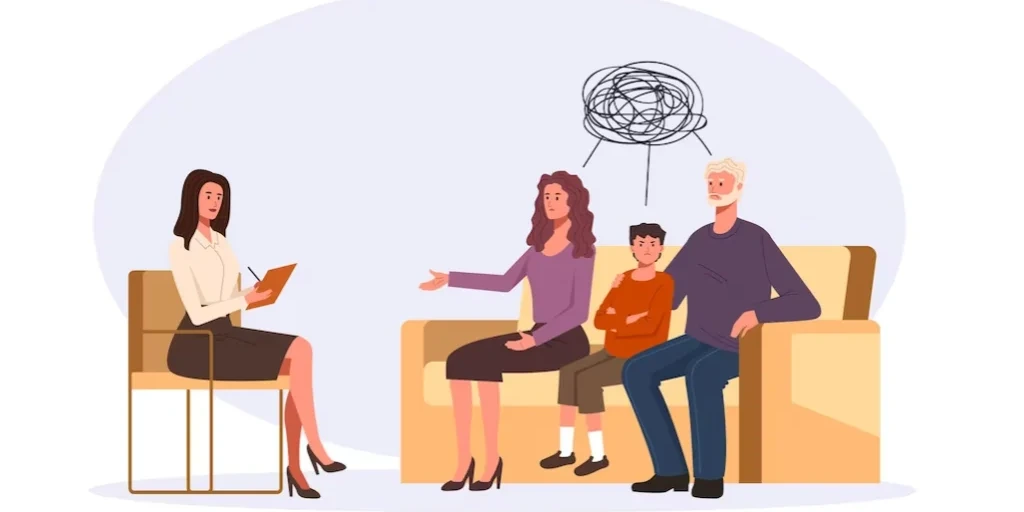
The 202 Club
The 202 Club is a non-profit rehab located in Pasadena, California. The 202 Club specializes in the ...

Atlantic Recovery Services Charter X
Atlantic Recovery Services Charter X is a private rehab located in Los Angeles, California. Atlantic...

Progress House
Progress House is a private rehab located in Torrance, California. Progress House specializes in the...

NCADD – National Council on Alcohol and Drug Dependence – Long Beach Boulevard
NCADD – National Council on Alcohol and Drug Dependence – Long Beach Boulevard is a non-profit rehab...

Meridian Youth Treatment Center
Meridian Youth Treatment Center is a private rehab located in Malibu, California. Meridian Youth Tre...

Recovery Zone I
Recovery Zone I is a private rehab located in North Hills, CA. Recovery Zone I specializes in the tr...

Tr With Co
Tr With Co is a private rehab located in Gardena, California. Tr With Co specializes in the treatmen...

A New Start
A New Start is a private rehab located in Los Angeles, California. A New Start specializes in the tr...

Promises Treatment Centers
Promises Treatment Centers is a dual-diagnosis addiction treatment center specializing in treating a...

Matrix Institute on Addictions
Matrix Institute on Addictions - West Washington Boulevard offers outpatient and intensive outpatien...

Seeking Peaceful Solutions
Seeking Peaceful Solutions is a non-profit rehab located in Los Angeles, California. Seeking Peacefu...
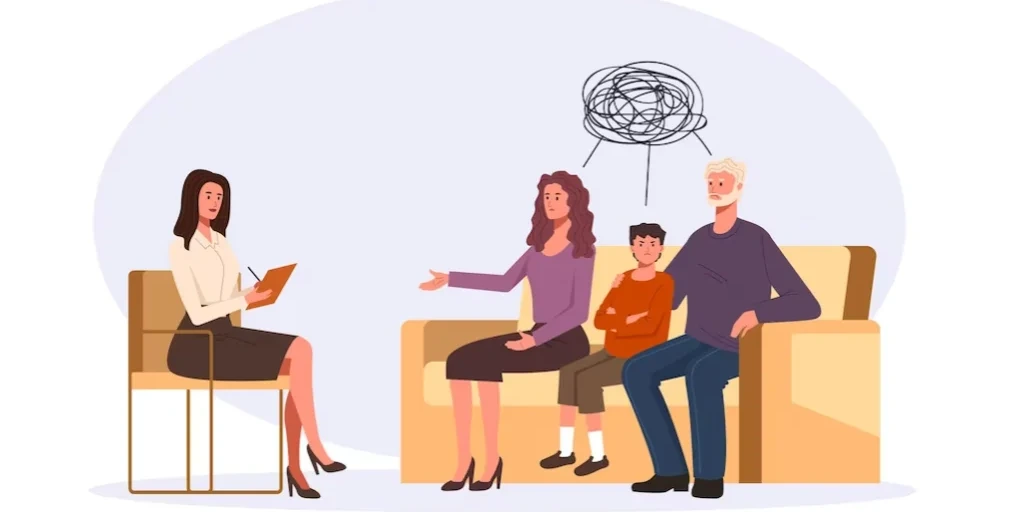
Salvation Army – Haven
Salvation Army – Haven is a non-profit rehab located in Los Angeles, California. Salvation Army – Ha...

Road 2 Recovery
Road 2 Recovery is a private rehab located in Long Beach, California. Road 2 Recovery specializes in...

Do It Now Foundation of Southern California
Do It Now Foundation of Southern California is a private rehab located in Los Angeles, California. D...

DBT Center of Southern California
DBT Center of Southern California offers inpatient and outpatient treatment for individuals with alc...

Twin Town Treatment Centers
Twin Town Treatment Centers - Torrance offers outpatient treatment for individuals with alcohol and/...

Family Counseling Services
Family Counseling Services is a private rehab located in El Monte, California. Family Counseling Ser...

Intervention Institute
Intervention Institute is a private rehab located in Westlake Village, California. Intervention Inst...

Al – Anon
Al – Anon is a non-profit rehab located in Santa Fe Springs, California. Al – Anon specializes in th...

AA – Alcoholics Anonymous – Central Los Angeles
AA – Alcoholics Anonymous – Central Los Angeles is a non-profit rehab located in Los Angeles, Califo...

SOBA Recovery Center
SOBA Recovery Center offers inpatient and intensive outpatient services for individuals with alcohol...

Foothill Family Services – El Monte
Foothill Family Services – El Monte is a private rehab located in El Monte, California. Foothill Fam...

Pacific Clinics – Portals Mariposa Clubhouse
Pacific Clinics – Portals Mariposa Clubhouse is a private rehab located in Los Angeles, California. ...

New Way Foundation
New Way Foundation is a private rehab located in Burbank, California. New Way Foundation specializes...

Let’s Talk Recovery
Let’s Talk Recovery is a private rehab located in Beverly Hills, California. Let’s Talk Recovery spe...

Atlantic Recovery Services Charter XVI
Atlantic Recovery Services Charter XVI is a private rehab located in Los Angeles, California. Atlant...

San Fernando Valley Counseling Center
San Fernando Valley Counseling Center is a private rehab located in Northridge, California. San Fern...

Recovery Advocates
Recovery Advocates is a private rehab located in Westlake Village, California. Recovery Advocates sp...

AA – Alcoholics Anonymous – 15915 Main Street
AA – Alcoholics Anonymous – 15915 Main Street is a non-profit rehab located in La Puente, California...

CA Diversion Intervention Foundation – Outpatient
CA Diversion Intervention Foundation – Outpatient is a private rehab located in Hawthorne, Californi...

AA – Alcoholics Anonymous – Pacoima Group
AA – Alcoholics Anonymous – Pacoima Group is a non-profit rehab located in Los Angeles, California. ...

Pathfinders Alano Club
Pathfinders Alano Club is a non-profit rehab located in Los Angeles, California. Pathfinders Alano C...

Alternative Options Counseling Center
Alternative Options Counseling Center is a private rehab located in Cerritos, California. Alternativ...

Atlantic Alano Club
Atlantic Alano Club is a non-profit rehab located in Long Beach, California. Atlantic Alano Club spe...

Get Off Drugs – Men’s Home
Get Off Drugs – Men’s Home is a private rehab located in Long Beach, California. Get Off Drugs – Men...

Absolute Control Transitional Counseling Center
Absolute Control Transitional Counseling Center is a private rehab located in Pasadena, California. ...

RIGHT Program
RIGHT Program is a private rehab located in Los Angeles, California. RIGHT Program specializes in th...

Hollywood Recovery Treatment Center
Hollywood Recovery Treatment Center is a private rehab located in Los Angeles, California. Hollywood...

Riviera Recovery
Riviera Recovery is a private rehab located in Malibu, California. Riviera Recovery specializes in t...

Engage Psychological Services
Engage Treatment Programs offers outpatient programs for individuals with mental health disorders an...

AA – Alcoholics Anonymous – Groupo Pasadena
AA – Alcoholics Anonymous – Groupo Pasadena is a non-profit rehab located in Pasadena, California. A...

AA – Alcoholics Anonymous – Latino
AA – Alcoholics Anonymous – Latino is a non-profit rehab located in El Monte, California. AA – Alcoh...

Stone Eagle Retreat
Stone Eagle Retreat is a private rehab located in Malibu, California. Stone Eagle Retreat specialize...

AA – Alcoholics Anonymous – Un DIA A LA VEZ
AA – Alcoholics Anonymous – Un DIA A LA VEZ is a non-profit rehab located in Los Angeles, California...

Bridge at Miracle Mile
Bridge at Miracle Mile is a private rehab located in Los Angeles, California. Bridge at Miracle Mile...
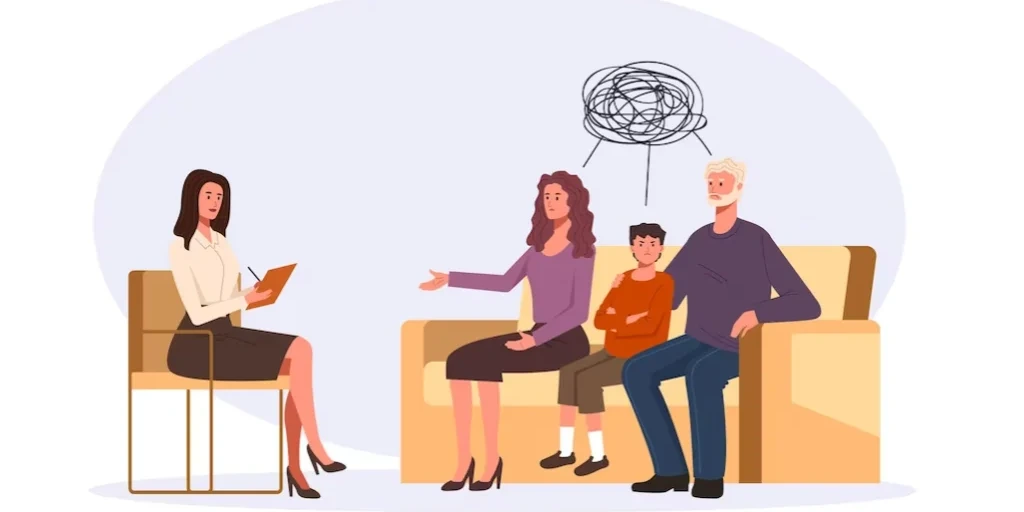
Alcoholics Anonymous and Narcotics Anonymous
Alcoholics Anonymous and Narcotics Anonymous is a non-profit rehab located in La Puente, California....

Alcoholism and Drug Treatment Center
Alcoholism and Drug Treatment Center is a private rehab located in Long Beach, California. Alcoholis...

Rebos
Living Rebos, in Los Angeles, California, is a luxury, 12 step-focused drug and alcohol rehab for ad...

Rossmore Alcohol & Drug Recovery
Rossmore Alcohol & Drug Recovery is a private rehab located in Beverly Hills, California. Rossmore A...

Creative Care
Creative Care is a luxury drug and alcohol rehab for adults in Malibu, California. They provide dual...

Torrance – Lomita Alano Club
Torrance – Lomita Alano Club is a non-profit rehab located in Torrance, California. Torrance – Lomit...

Milestones Ranch Malibu
Milestones Ranch Malibu is a private rehab located in Malibu, California. Milestones Ranch Malibu sp...

Alcoholism Center for Women – Outpatient Services
Alcoholism Center for Women – Outpatient Services is a private rehab located in Los Angeles, Califor...

Looking Glass Counseling
Looking Glass Counseling is a private rehab located in Canoga Park, California. Looking Glass Counse...

Helping Kids to Recover
Helping Kids to Recover is a private rehab located in Los Angeles, California. Helping Kids to Recov...

National Council on Alcohol and Drug Dependence
National Council on Alcohol and Drug Dependence is a private rehab located in Long Beach, California...

NCADD – Woman to Woman
NCADD – Woman to Woman is a private rehab located in Long Beach, California. NCADD – Woman to Woman ...

Amanecer Community Counseling Service
Amanecer Community Counseling Service is a private rehab located in Los Angeles, California. Amanece...
The Beacon House Association of San Pedro – 132 10th Street
The Beacon House Association of San Pedro is a residential treatment facility for adult men struggli...

Valley Women’s Center
Valley Women’s Center is a private rehab located in Canoga Park, California. Valley Women’s Center s...

AA – Alcoholicos Anonimos – South Central Avenue
AA – Alcoholicos Anonimos – South Central Avenue is a non-profit rehab located in Los Angeles, Calif...

BHS – Lincoln Heights Family Recovery Center
BHS - Lincoln Heights Family Recovery Center provides Outpatient Substance Abuse Treatment for those...

South Central Health and Rehab Program
South Central Health and Rehab Program is a private rehab located in Los Angeles, California. South ...

Brighter Future
Brighter Future is a private rehab located in Los Angeles, California. Brighter Future specializes i...

Choice and Change
Choice and Change is a private rehab located in Los Angeles, California. Choice and Change specializ...

HOPICS – South Crocker Street
HOPICS is a mental health and co-occurring substance use disorder rehab in Los Angeles, California. ...

Aviva Family and Childrens Services – Community Mental Health
Aviva Family and Childrens Services – Community Mental Health is a private rehab located in Los Ange...

Vision of Light
Vision of Light is a private rehab located in Culver City, California. Vision of Light specializes i...

CLARE l MATRIX Foundation – Women’s Treatment
CLARE l MATRIX Foundation – Women’s Treatment is a non-profit rehab located in Santa Monica, Califor...

AA – Alcoholics Anonymous – Distrito 33
AA – Alcoholics Anonymous – Distrito 33 is a non-profit rehab located in Los Angeles, California. AA...

Summit Malibu
Summit Malibu is a drug and alcohol treatment center that provides safe and effective rehabilitation...

Antelope Valley Council on Alcohol and Drug Dependency
Antelope Valley Council on Alcohol and Drug Dependency offers outpatient treatment for individuals w...

Seasons Recovery Center
Seasons Recovery Center is a private rehab located in Malibu, California. Seasons Recovery Center sp...

A Step in The Right Direction
A Step in The Right Direction is a premier substance abuse and co-occurring mental health program. T...

Atlantic Recovery Services – Three Manchester School
Atlantic Recovery Services – Three Manchester School is a private rehab located in Los Angeles, Cali...

Alcoholism Center for Women – Miracle House
Alcoholism Center for Women – Miracle House is a private rehab located in Los Angeles, California. A...

California Mental Health Connection – Paths of Light
California Mental Health Connection – Paths of Light is a private rehab located in West Covina, Cali...

Rena Recovery Center
Rena Recovery Center offers inpatient treatment for individuals with alcohol and/or substance addict...

Acts Recovery Center
Acts Recovery Center is a private rehab located in Bellflower, California. Acts Recovery Center spec...

Cycles of Change Recovery Services – Lancaster
Cycles of Change Recovery Services - Beech Avenue offers inpatient and outpatient treatment for indi...

Casa de Colibri
Casa de Colibri is a private rehab located in Los Angeles, California. Casa de Colibri specializes i...

Live Again Recovery Homes
Live Again Recovery Homes is a private rehab located in Lancaster, California. Live Again Recovery H...

Northeast Mental Health Center
Northeast Mental Health Center is a public rehab located in Los Angeles, California. Northeast Menta...

Matrix Institute on Addictions – Sawtelle Boulevard
Matrix Institute on Addictions - Sawtelle Boulevard in Southern California, assist consumers with a ...

New Beginnings Recovery
New Beginnings Recovery is a private rehab located in Los Angeles, California. New Beginnings Recove...

Echo Malibu Treatment Center
Echo Malibu Treatment Center is a private rehab located in Malibu, California. Echo Malibu Treatment...

American Health Services
American Health Services is a private rehab located in Los Angeles, California. American Health Serv...

Adrians Rehabilitation House
Adrians Rehabilitation House is a private rehab located in Pomona, California. Adrians Rehabilitatio...
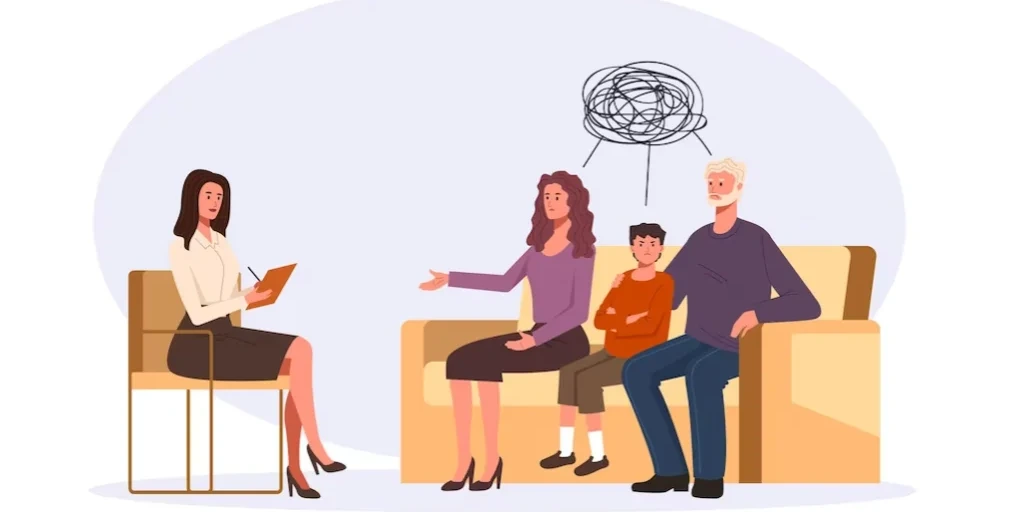
Assessment Intervention Resources
Assessment Intervention Resources is a private rehab located in Pasadena, California. Assessment Int...

Atlantic Recovery Services
Atlantic Recovery Services is a private rehab located in Long Beach, California. Atlantic Recovery S...

APAIT
APAIT is a private rehab located in Los Angeles, California. APAIT specializes in the treatment of d...

Atlantic Recovery Services Charter II Firestone
Atlantic Recovery Services Charter II Firestone is a private rehab located in Los Angeles, Californi...

Atlantic Recovery Services – SEA Charter School
Atlantic Recovery Services – SEA Charter School is a private rehab located in Long Beach, California...

Florence Drug and Alcohol Treatment
Florence Drug and Alcohol Treatment is a private rehab located in Inglewood, California. Florence Dr...

2nd Chance for Recovery
2nd Chance for Recovery is a private rehab located in Los Angeles, California. 2nd Chance for Recove...

Roybal Family Mental Health Center
Roybal Family Mental Health Center is a public rehab located in Los Angeles, California. Roybal Fami...

Atlantic Recovery Services
Atlantic Recovery Services is a private rehab located in Lancaster, California. Atlantic Recovery Se...

AADAP – Asian American Drug Abuse Program – Olympia Academy
Asian American Drug Abuse Program (AADAP) - Olympia Academy offers inpatient treatment for teenagers...

AADAP – Asian American Drug Abuse Program – Wilshire Building
Asian American Drug Abuse Program (AADAP) - Wilshire Building provides outpatient substance abuse tr...

Circle of Help Alcohol Rehabilitation Center
Circle of Help Alcohol Rehabilitation Center is a private rehab located in Los Angeles, California. ...

The Discovery House
The Discovery House is an accredited luxury drug and alcohol rehab center located in Reseda, Califor...

Portals House
Portals House is a private rehab located in Los Angeles, California. Portals House specializes in th...

AA – Alcoholics Anonymous
AA – Alcoholics Anonymous is a non-profit rehab located in Claremont, California. AA – Alcoholics An...

Discovery Program
Discovery Program is a private rehab located in Los Angeles, California. Discovery Program specializ...

Van Nuys Alcohol and Drug Treatment
Van Nuys Alcohol and Drug Treatment is a private rehab located in Van Nuys, California. Van Nuys Alc...

Los Angeles Premier Rehabilitation Center
Los Angeles Premier Rehabilitation Center is a private rehab located in Malibu, California. Los Ange...

Work in Progress – Substance Abuse Program
Work in Progress – Substance Abuse Program is a private rehab located in Long Beach, California. Wor...

SPIRITT – La Puente Family Center
SPIRITT – La Puente Family Center is a private rehab located in La Puente, California. SPIRITT – La ...

Oasis Women’s Recovery Community
Oasis Womens Recovery is a female-only non-profit organization located in Sylmar, California. Oasis ...

Twin Town Treatment Centers
Twin Town Treatment Centers - Santa Monica Boulevard offers outpatient treatment for individuals wit...

BHS – Wilmington Community Recovery Center
BHS - Wilmington Community Recovery Center provides Outpatient Substance Abuse Treatment for those c...

Malibu Angel House
Malibu Angel House is a private rehab located in Malibu, California. Malibu Angel House specializes ...

Mount Carmel Treatment Center
Mount Carmel Treatment Center is an inpatient rehab located in Los Angeles, CA. Mount Carmel Treatme...

AA – Alcoholics Anonymous – Figueroa Street
AA – Alcoholics Anonymous – Figueroa Street is a non-profit rehab located in Los Angeles, California...

Atlantic Recovery Services Charter III
Atlantic Recovery Services Charter III is a private rehab located in Los Angeles, California. Atlant...

National Council on Alcohol and Drug Dependency
National Council on Alcohol and Drug Dependency is a private rehab located in Canyon Country, Califo...

ARC Outpatient Treatment Program
ARC Outpatient Treatment Program is a private rehab located in Los Angeles, California. ARC Outpatie...

Sovereign Health
Sovereign Health provides mental health and substance abuse services for adults and adolescents. The...

Alcohol Drug Council – High Gain Project
Alcohol Drug Council – High Gain Project is a non-profit rehab located in Santa Monica, California. ...

Words of Wonder
Words of Wonder is a private rehab located in Santa Monica, California. Words of Wonder specializes ...

HealthRight 360
HealthRight 360 is a non-profit rehab located in Los Angeles, CA. HealthRight 360 specializes in the...

AA – Alcoholics Anonymous – Los Amigos Group
AA – Alcoholics Anonymous – Los Amigos Group is a non-profit rehab located in Montebello, California...

Ocean View Sober Living Recovery Center
Ocean View Sober Living Recovery Center is a private rehab located in San Pedro, California. Ocean V...

URDC Human Services
URDC Human Services is a private rehab located in Pasadena, California. URDC Human Services speciali...

Dial Education Center
Dial Education Center is a private rehab located in Los Angeles, California. Dial Education Center s...

South Bay Alano Club
South Bay Alano Club is a non-profit rehab located in Hermosa Beach, California. South Bay Alano Clu...

Laws Support Center
Laws Support Center is a private rehab located in Los Angeles, California. Laws Support Center speci...

California Hispanic Commission – Aguila Recovery Home
California Hispanic Commission – Aguila Recovery Home is a private rehab located in Los Angeles, Cal...

Body Sobriety
Body Sobriety is a private rehab located in Los Angeles, California. Body Sobriety specializes in th...

Pomona Alcohol and Drug Recovery
Pomona Alcohol and Drug Recovery is a private rehab located in Pomona, California. Pomona Alcohol an...

St John’s Chem Dependency Center
St John’s Chem Dependency Center is a private rehab located in Santa Monica, California. St John’s C...

Changing Steps
Changing Steps is a private rehab located in Los Angeles, California. Changing Steps specializes in ...

SPIRITT Family Services
SPIRITT Family Services is a non-profit rehab located in El Monte, California. SPIRITT Family Servic...

JJAK Psychotherapy Services
JJAK Psychotherapy Services is a private rehab located in Pomona, California. JJAK Psychotherapy Ser...

Studio 12 Private Alcohol and Drug Treament Program – Detox
Studio 12 Private Alcohol and Drug Treament Program – Detox is a private rehab located in Valley Vil...

AA – Alcoholics Anonymous – Grupo Ilusion
AA – Alcoholics Anonymous – Grupo Ilusion is a non-profit rehab located in Los Angeles, California. ...

Aanaca Program House Structured Sober Living
Aanaca Program House Structured Sober Living is a private rehab located in Van Nuys, CA. Aanaca Prog...

The Chicago School of Professional Psychology Counseling Center
The Chicago School of Professional Psychology Counseling Center is a non-profit rehab located in Los...
The Beacon House Association of San Pedro – 124 11th Street
The Beacon House Association of San Pedro - 124 11th Street is a residential treatment facility for ...

MJB Transitional Recovery
MJB Transitional Recovery is a private rehab located in Los Angeles, California. MJB Transitional Re...

Step To Freedom
Step To Freedom is a private rehab located in Los Angeles, California. Step To Freedom specializes i...

Guidance Health Services
Guidance Health Services is a private rehab located in Hawthorne, California. Guidance Health Servic...

Higher Goals
Higher Goals is a private rehab located in Los Angeles, California. Higher Goals specializes in the ...

Didi Hirsch Community Mental Health Center
Didi Hirsch Community Mental Health Center is a private rehab located in Los Angeles, California. Di...

House of Hope
House of Hope is a residential treatment program for women who are trying to recover from drug or al...

San Fernando Valley Community Mental Health Center – Independent Living
San Fernando Valley Community Mental Health Center – Independent Living is a private rehab located i...

WHRC – West Hollywood Recovery Center
WHRC – West Hollywood Recovery Center is a non-profit rehab located in West Hollywood, California. W...

AA – Alcoholicos Anonimos – Grupo 3 Legados
AA – Alcoholicos Anonimos – Grupo 3 Legados is a non-profit rehab located in Los Angeles, California...

High Desert Recovery Services
High Desert Recovery Services is a public rehab located in Lancaster, California. High Desert Recove...

AA – Alcoholics Anonymous – Central
AA – Alcoholics Anonymous – Central is a non-profit rehab located in Glendora, California. AA – Alco...

Westside Village Sober Living Homes of West Los Angeles
Westside Village Sober Living Homes of West Los Angeles is a private rehab located in Los Angeles, C...

Nuevo Si Se Puede
Nuevo Si Se Puede is a private rehab located in Los Angeles, California. Nuevo Si Se Puede specializ...

Pacific Asian Counseling Services
Pacific Asian Counseling Services is a private rehab located in Long Beach, California. Pacific Asia...

David Fox Counseling Center
David Fox Counseling Center is a private rehab located in Los Angeles, California. David Fox Counsel...

AA – Alcoholics Anonymous – Central Office
AA – Alcoholics Anonymous – Central Office is a non-profit rehab located in Lancaster, California. A...

Flossie Lewis New Life Recovery
Flossie Lewis New Life Recovery is a private rehab located in Long Beach, California. Flossie Lewis ...

Grupo Nuevo Amanecer
Grupo Nuevo Amanecer is a private rehab located in Lynwood, California. Grupo Nuevo Amanecer special...

Anami Rehabilitation Services
Anami Rehabilitation Services is a private rehab located in Los Angeles, California. Anami Rehabilit...

AA – Alcoholicos Anonimos – Oficina Intergrutal 2
AA – Alcoholicos Anonimos – Oficina Intergrutal 2 is a non-profit rehab located in Pomona, Californi...

New You Center
New You Center is a private rehab located in Los Angeles, California. New You Center specializes in ...

Los Angeles New Line Counseling
Los Angeles New Line Counseling is a private rehab located in Los Angeles, California. Los Angeles N...

Action Family Counseling – The Ranch
Action Family Counseling – The Ranch is a private rehab located in Santa Clarita, California. Action...

California Drug Consultants
California Drug Consultants is a private rehab located in Pasadena, California. California Drug Cons...

Steves House Sober Living
Steves House Sober Living is a private rehab located in Los Angeles, California. Steves House Sober ...

AA – Alcoholics Anonymous
AA – Alcoholics Anonymous is a non-profit rehab located in Burbank, California. AA – Alcoholics Anon...

Women’s Odyssey Organization
Women's Odyssey Organization is a private traditional rehab located in Canoga Park, CA. Women's Odys...

El Centro de Amistad
El Centro de Amistad is a private rehab located in Los Angeles, California. El Centro de Amistad spe...

Pom Poms Castle Clean and Free
Pom Poms Castle Clean and Free is a private rehab located in Los Angeles, California. Pom Poms Castl...

El Proyecto del Barrio
El Proyecto del Barrio is a public rehab located in Los Angeles, California. El Proyecto del Barrio ...

NCADD – The National Council on Alcoholism and Drug Dependence of East San Gabriel and Pomona Valley
The National Council on Alcoholism and Drug Dependence of East San Gabriel and Pomona Valley is a no...

Alcohol Treatment Center
Alcohol Treatment Center is a private rehab located in Los Angeles, California. Alcohol Treatment Ce...

AA – Alcoholics Anonymous – Wilshire Boulevard
Alcoholics Anonymous (AA) - Wilshire Boulevard is an international fellowship of men and women who h...

Healing Today with Robert Buhrow
Healing Today with Robert Buhrow is a private counseling clinic located in Los Angeles, CA. Healing ...

CLARE Foundation – Detox
CLARE Foundation is a CARF accredited dual diagnosis substance use disorder treatment facility based...

Atlantic Recovery Services Charter XII
Atlantic Recovery Services Charter XII is a private rehab located in Los Angeles, California. Atlant...

RecoveryNow Drug Rehabs Los Angeles
RecoveryNow Drug Rehabs Los Angeles is a private rehab located in Los Angeles, California. RecoveryN...

Alcohol Abuse and Addiction Information and Treatment
Alcohol Abuse and Addiction Information and Treatment is a private rehab located in Monrovia, Califo...

Absolute Control Transitional Counseling Center
Absolute Control Transitional Counseling Center is a private rehab located in Burbank, California. A...

Welcome To Life Sober Living Centers – Rehab House
Welcome To Life Sober Living Centers - Rehab Transitional House is a rehab facility located in Covin...

Her Miracle Malibu – Sober Living for Women
Her Miracle Malibu – Sober Living for Women is a private rehab located in Malibu, California. Her Mi...

Twin Town Treatment Centers
Twin Town Treatment Centers - Laurel Canyon Boulevard offers outpatient treatment for individuals wi...

Didi Hirsch Mental Health Center – Venice Boulevard
Didi Hirsch Mental Health Center – Venice Boulevard is a private rehab located in Los Angeles, Calif...

AA – Alcoholics Anonymous – Gladstone Avenue
AA – Alcoholics Anonymous – Gladstone Avenue is a non-profit rehab located in Los Angeles, Californi...

Promises Treatment Centers – Rockcroft Drive
Located in Malibu, California, Promises Treatment Centers offers alcohol and drug rehab services. Th...

Child and Family Guidance Center
Child and Family Guidance Center is a private rehab located in Los Angeles, California. Child and Fa...

Peggy Albrecht Friendly House
Peggy Albrecht Friendly House is a residential facility that offers treatment services for women who...

Malibu Integrative Outpatient Treatment Center
Malibu Integrative Outpatient Treatment Center provides services for individuals with alcohol and/or...

Artemis Hill Recovery
Artemis Hill Recovery offers detoxification services for women with alcohol and/or substance addicti...
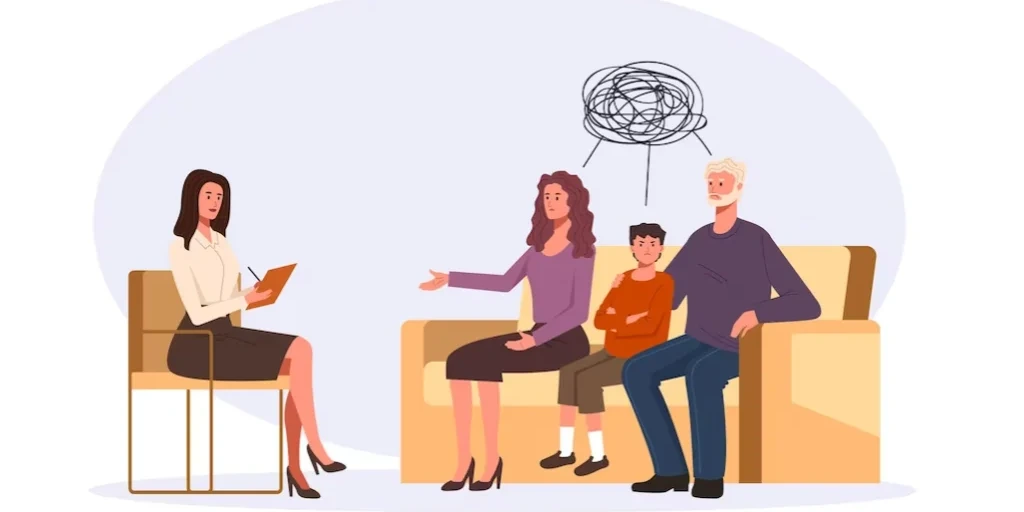
Prominence Treatment Center – Mulholland Highway
Prominence Treatment Center - Mulholland Highway offers inpatient and intensive outpatient services ...

La Ventana Treatment Programs
La Ventana Treatment Programs - 7th Street offers intensive outpatient programs for individuals with...

Rosewood
Rosewood Ocean Park Blvd for Eating Disorders offers treatment for anorexia, bulimia, binge eating d...
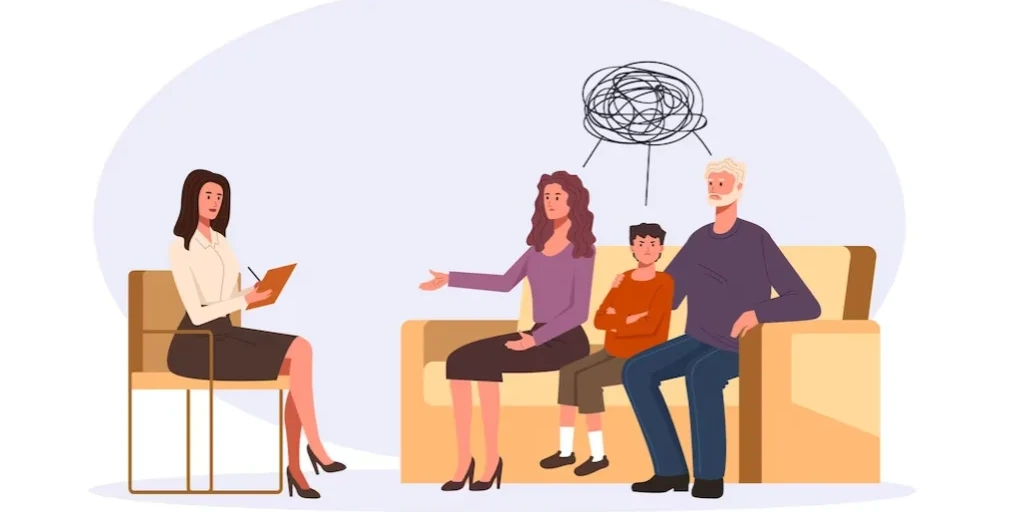
BAART Programs
BAART Programs is an outpatient clinic who provides methadone treatment and substance use counseling...

Dimensions Recovery Centers
Dimensions Recovery Centers - Cheviot Vista Pl offers inpatient services for individuals with alcoho...

Nulife Treatment Centers
Nulife Treatment Centers offers inpatient and outpatient services for individuals with alcohol and/o...
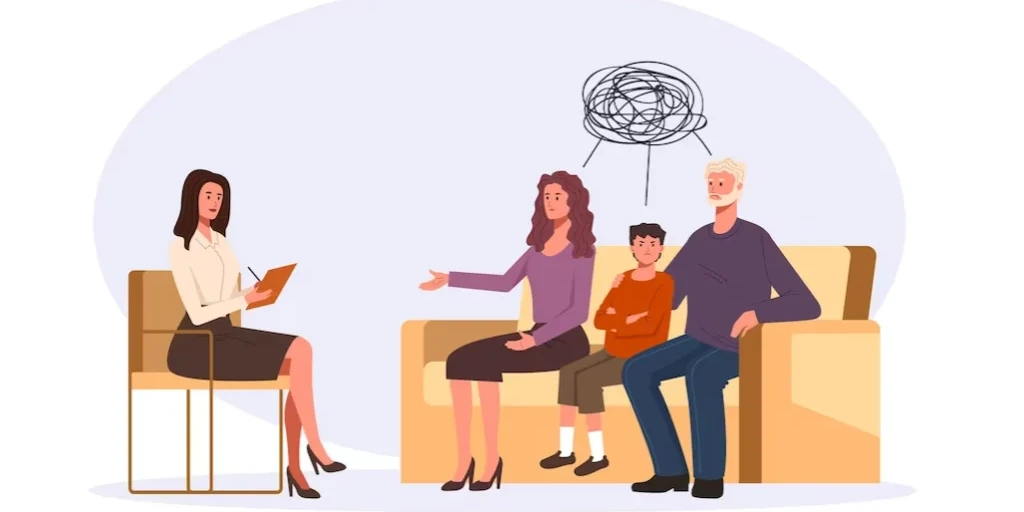
Nulife Treatment Centers – Outpatient
Nulife Treatment Centers - Outpatient offers substance abuse and co-occurring disorders treatment to...

Inneractions
Inneractions offers intensive outpatient services for individuals with alcohol and/or substance addi...

Footprints Behavioral Health
Footprints Behavioral Health - Elkwood Street offers inpatient and outpatient services for individua...

Visions Adolescent Treatment Centers
Visions Adolescent Treatment Centers - Barrington Walk offers outpatient services for individuals wi...

Haven House Treatment – 2245 Hillsboro Avenue
Haven House Treatment - 2245 Hillsboro Avenue provides sober living services for men with alcohol an...

Prominence Treatment Center – Las Virgenes Road
Prominence Treatment Center - Las Virgenes Road offers intensive outpatient services for individuals...

Action Family Counseling
Action Family Counseling also known as Action Drug Rehabs, offers outpatient treatment for those tee...

Dimensions Recovery Centers
Dimensions Recovery Centers - Huron Avenue offers inpatient services for individuals with alcohol an...

Breathe Life Healing Centers
Breathe is dedicated to outstanding trauma-informed clinical care to each client and their family. B...

Alo House Recovery Centers – Coast Highway
Alo House Recovery Centers - Coast Highway offers intensive outpatient program for those adults and ...

First Steps Recovery
First Steps Recovery - Redwing Street offers inpatient and outpatient services for individuals with ...

Alo House Recovery Centers – Phillip Avenue
Alo House Recovery Centers - Phillip Avenue offers outpatient and inpatient services for individuals...

Haven House Treatment – Selby Avenue
Haven House Treatment - Selby Avenue provides sober living services for individuals with alcohol and...

Club Soba
Club Soba offers inpatient and outpatient services for individuals with alcohol and/or substance add...

Haven House Treatment – National Boulevard
Haven House Treatment - National Boulevard offers outpatient services for individuals with alcohol a...

Profound Treatment
Profound Treatment offers outpatient services for individuals with alcohol and/or substance addictio...

Destinations
Destinations offers intensive outpatient and partial hospitalization program services for teen ages ...

El Centro Del Pueblo
El Centro Del Pueblo provide mental health services for children, youth and families around the comm...

Evolve Treatment Centers for Teens
Evolve Treatment Centers for Teens is located in Topanga, California. Evolve Treatment Centers for T...

KC Services
K.C. Services is dedicated to provide comprehensive substance abuse and family violence services to ...

Dimensions Recovery Centers
Dimensions Recovery Centers - Pacific Street offers inpatient services for individuals with alcohol ...

CLARE Foundation
CLARE Foundation offers multiple addiction recovery programs for adults in Santa Monica, CA. Individ...
The Beacon House Association of San Pedro – 126 10th Street
The Beacon House Association of San Pedro - 126 10th Street is a residential treatment facility for ...

The Canyon at Encino
Foundations Los Angeles is a comprehensive outpatient center that provides evidence-based therapies ...

Haven House Treatment – 2252 Hillsboro Avenue
Haven House Treatment - 2252 Hillsboro Avenue offers inpatient and outpatient services for individua...

Uplift Family Services
Uplift Family Services is located in Fresno, California. Uplift Family Services is one of the larges...

Social Model Recovery Systems
Social Model Recovery Systems offers outpatient services for adults and adolescents with alcohol and...

Evolve Treatment Centers for Teens
Evolve Treatment Centers for Teens is a luxury, 12 step-focused drug and alcohol rehab for adolescen...

Sunset Malibu (Cliffside Malibu)
Sunset Malibu (Cliffside Malibu) is a private rehab located in Malibu, California. Sunset Malibu (Cl...

Hope Alive Counseling Centers
Hope Alive Counseling Centers is a residential and outpatient rehab located in Lynwood, CA. Hope Ali...

Seasons Beach House
Seasons Beach House is a drug treatment center that provides you with holistic treatment and individ...

NuLife Recovery Center
NuLife Recovery Center, in Calabasas, California, is a luxury, 12 step-focused drug and alcohol reha...

Seasons Agoura
Seasons Agoura is a drug treatment center that provides you with holistic treatment and individualiz...

Alo House Recovery Centers
Alo House Recovery Centers offers intensive outpatient program for those adults and young adults str...

Alo House Recovery Centers – Selfridge Drive
Alo House Recovery Centers - Selfridge Drive offers outpatient and inpatient services for individual...

Malibu Seaside Serenity Cove
Malibu Seaside Serenity Cove is a luxurious residential treatment facility. They use an Accelerated ...

Serenity Recovery Center
Serenity Recovery Center is located in Encino, California. Serenity Recovery Center is a private reh...

Lake Hughes Recovery
Lake Hughes Recovery is a dual diagnosis drug rehab center located in Gorman, California that provid...

Epiphany Sober Living
Epiphany Sober Living, in Los Angeles, California, provides 12 step-focused supportive housing for a...

Launch Young Adult Empowerment Center
Launch Young Adult Empowerment Center is a comprehensive life skills program for those young adults ...

Santa Clarita Medical & Mental Health Services
Santa Clarita Medical & Mental Health Services is a private rehab located in Newhall, CA. Santa Clar...

Harmony Place – Ventura Blvd.
Harmony Place–Ventura Blvd. is an integrative drug rehab for adults in Woodland Hills, California. T...

Hill Street Medical & Mental Health Services
Hill Street Medical & Mental Health Services is a private rehab located in Los Angeles, CA. Hill Str...

Teen Challenge
Teen Challenge is a private rehab located in Lynwood, California. Teen Challenge specializes in the ...

Banyan Therapy Group
Banyan Therapy Group is a private rehab located in Studio City, California. Banyan Therapy Group spe...

Alchemy House Sober Living
Alchemy House Sober Living is a private rehab located in Playa Del Rey, California. Alchemy House So...

Comfort Recovery
Comfort Recovery provides a drug an alcohol Intensive Outpatient Program. They offer compassionate c...

Freedom Treatment Centers of California
Freedom Treatment Centers of California provides a personalized approach to drug therapy and rehabil...